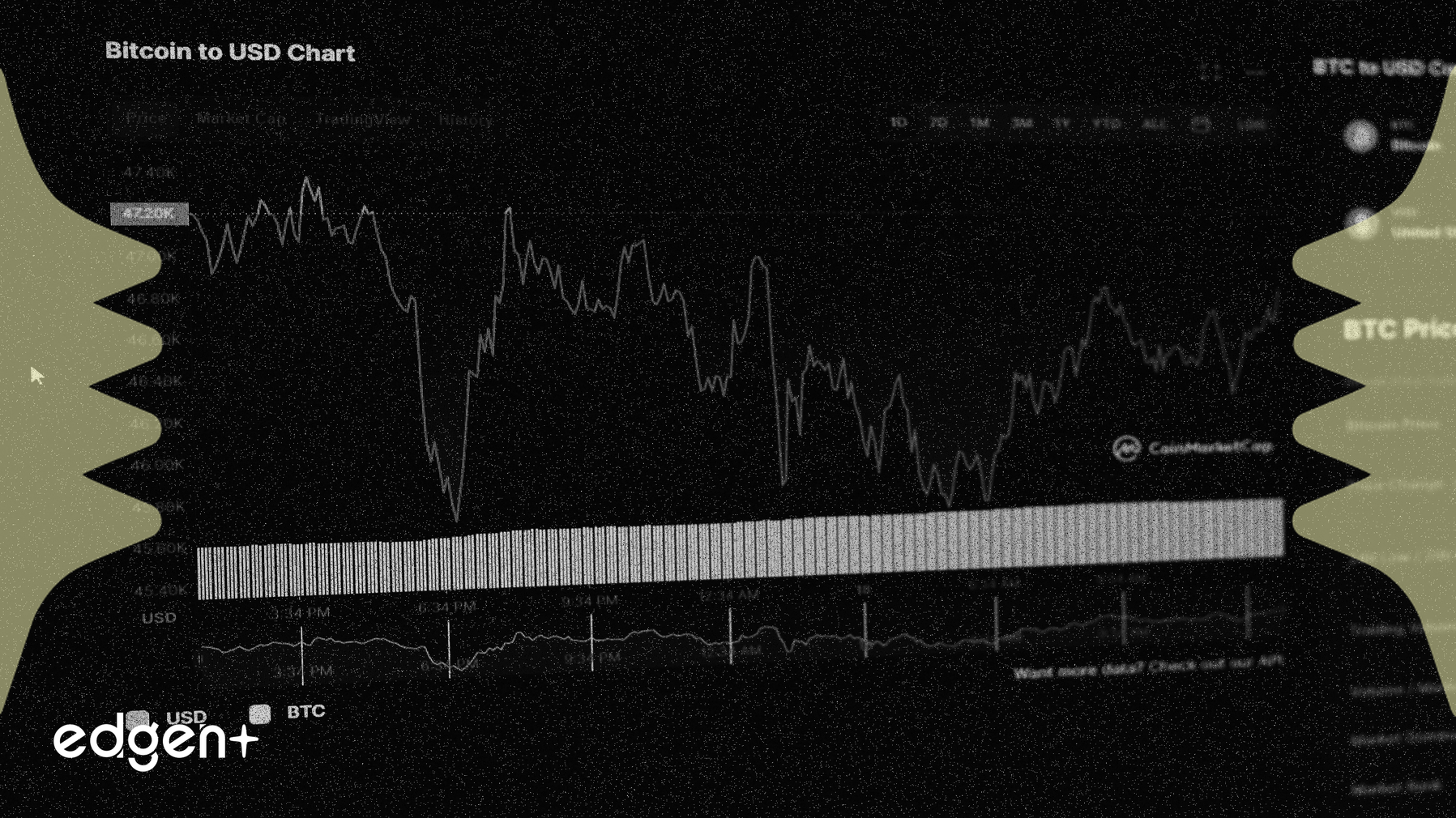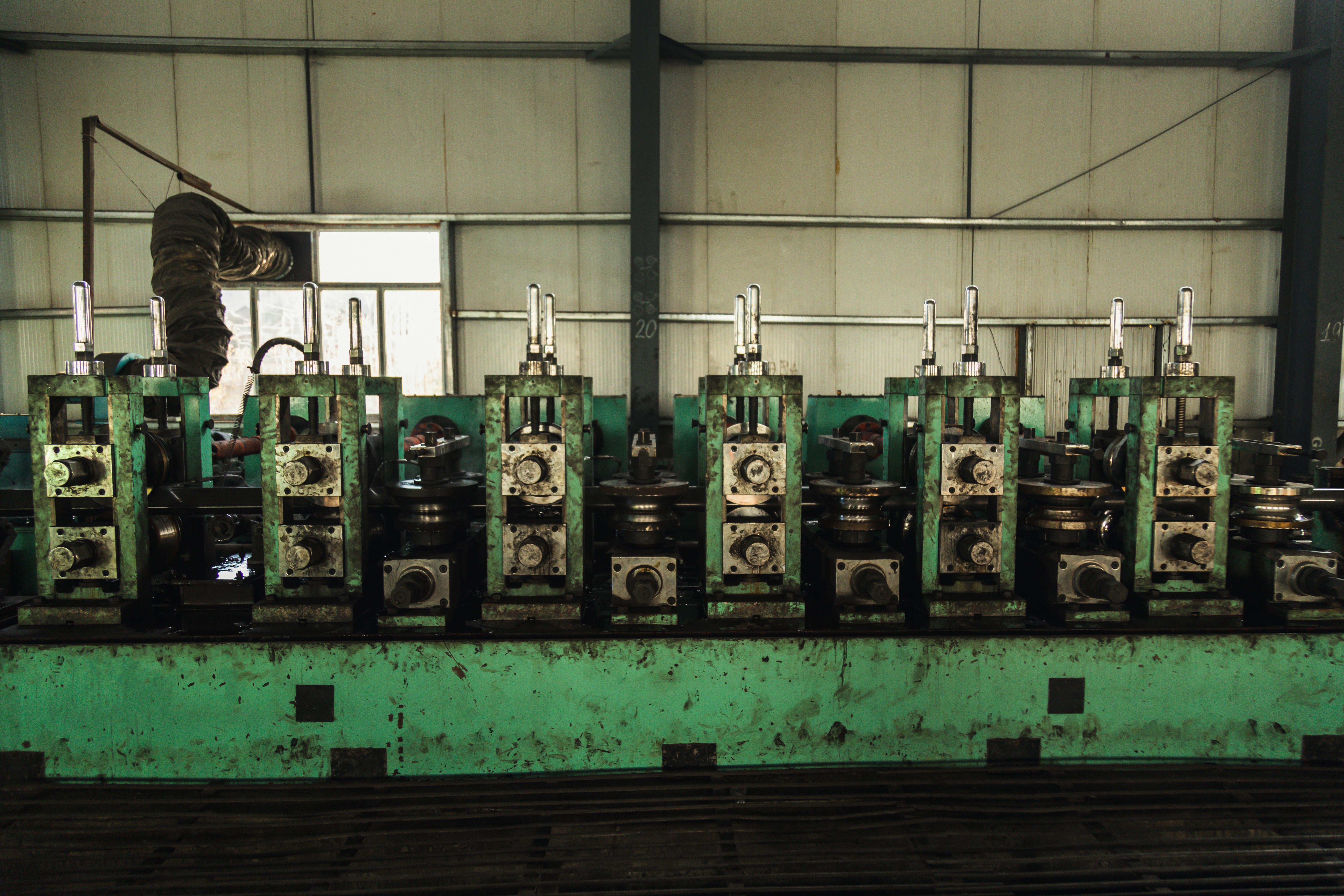Features
Trading Strategies
Resources
Ask AI About F

No Data Yet

## フォード、Fシリーズの生産を大幅に増加へ **フォード・モーター・カンパニー** (NYSE:F) は、人気が高いF-150およびFシリーズスーパーデューティトラックの生産を大幅に増加させる計画を発表しました。2026年から年間生産量を50,000台以上追加する予定です。この戦略的な動きは、堅調な顧客需要に対応し、主要なアルミニウムサプライヤーの施設での火災による生産損失を軽減することを目的としています。 ## 生産拡大の詳細 2026年第1四半期に開始される予定の生産増強により、ミシガン州とケンタッキー州にあるフォードの製造施設全体で最大1,000人の新規雇用が創出されます。具体的には、同社はミシガン州の**ディアボーン・トラック工場**に第3班を導入し、約45,000台のF-150ガソリン車およびハイブリッドトラックを追加で組み立てられるようにします。**フォード・ルージュ・コンプレックス**でのこの拡張には、ディアボーン・トラック工場の新班用に1,200人、ディアボーン・スタンピング工場用に90人、ディアボーン多角化製造工場用に80人を含む、最大900人の新規従業員の採用が必要となります。同時に、**ケンタッキー・トラック工場**はFシリーズスーパーデューティの組立ライン速度を向上させ、年間5,000台以上のトラックを追加し、100以上の新規ポジションを追加します。このイニシアチブは、強い顧客関心に直接対応するとともに、ニューヨーク州オズウィーゴにある**ノベリス**のアルミニウム工場での火災後の復旧策としても機能します。 ## 堅調な収益と戦略的拡大に市場が反応 フォードの株式は、これらの発表と2025年第3四半期の財務結果の公表を受けて大幅な上昇を経験しました。同社の株価は金曜日の**S&P 500指数**で最高のパフォーマンスを示し、15ヶ月ぶりの高値で引け、**13.97ドル**の52週ぶりの高値を記録しました。この好意的な市場反応は、フォードの第3四半期における記録的な**505億ドル**の収益に牽引されました。これは前年比9%増であり、アナリストのコンセンサス予想である**430.8億ドル**を決定的に上回りました。同自動車メーカーはまた、**24億ドル**の純利益と1株あたり**45セント**の調整済み利益を計上し、予想の**38セント**を上回りました。株価は、非常に高い取引量で取引セッション中に12%以上急騰し、同社の運営効率と戦略的成長計画に対する投資家の信頼を反映しています。 ## 広範な背景と財務健全性 フォードは**490億ドル**の時価総額を維持しており、過去6ヶ月間で**25.32%**の価格リターンで強力な勢いを示しています。同社はまた、**6.29%**という魅力的な配当利回りも提供しています。第3四半期の収益予想を上回ったにもかかわらず、フォードは2025年の調整済み利益ガイダンスを、以前の**65億ドルから75億ドル**の範囲から**60億ドルから65億ドル**の間に修正しました。この調整は、最も収益性の高いトラックとSUVの生産を混乱させたノベリスの火災による推定**15億ドルから20億ドル**のコスト影響に直接起因しています。特筆すべきは、フォードの最高財務責任者シェリー・ハウスが、同社は当初、火災前にガイダンスを**80億ドル**以上に引き上げることを計画していたと述べていることです。基盤となる事業実績は堅調であり、フォードは5四半期連続で前年比コスト削減(関税を除く)を達成し、2025年の**10億ドル**の純コスト改善目標達成に向けて順調に進んでいます。これは、第3四半期における保証コストの約**4.5億ドル**の前年比減少によって裏付けられています。 ## 将来の展望と注目すべき主要要因 今後、投資家は2026年におけるフォードの野心的な生産拡大計画の実行と、ノベリスの火災の長期的な影響から完全に回復する能力を注意深く監視するでしょう。修正された2025年の利益ガイダンスは重要なベンチマークとなり、サプライチェーンの安定性やトラックおよびSUVに対する消費者需要の変化によるさらなる影響は、将来の業績に影響を与える可能性があります。同社が継続的にコスト規律に注力し、保証コストを管理する能力も、競争の激しい自動車市場における持続的な財務健全性のための重要な指標となるでしょう。

## 市場概況:インフレデータと企業業績が上昇を牽引 米国の株式市場は、9月の消費者物価データがコンセンサス予想を下回り、**フォード・モーター社 (F)** のような企業の好調な決算に投資家が反応したことで上昇を記録しました。同時に、米・カナダ貿易関係の新たな展開が地政学的な不確実性を加え、市場の物語に複雑な側面を付け加えました。 ## 9月CPI報告:インフレは予想を下回り落ち着く 労働統計局は、米国の消費者物価指数 (CPI) が9月に**0.3%**上昇したと報告しました。年間のインフレ率は**3.0%**で、8月の2.9%からわずかに上昇しましたが、経済学者が予測した**3.1%**を重要な点で下回りました。変動の激しい食品およびエネルギー価格を除外したコアインフレは、前年比3.0%の上昇を記録し、前月の3.1%からわずかに減速しました。月次ベースでは、コアCPIは**0.2%**上昇し、これも0.3%の上昇予想を下回りました。このデータは、主要株価指数が新たな日中高値を記録し、市場のポジティブなセンチメントに貢献しました。**ダウ・ジョーンズ工業株平均 (^DJI)** は**1.1%**上昇し、**S&P 500 (^SPX)** は**1%**上昇し、**ナスダック総合指数 (^IXIC)** は**1.3%**上昇しました。 ## カナダとの貿易摩擦激化 別途、トランプ大統領はカナダ製品に追加で**10%の関税**を課すと発表し、米・カナダ間の貿易摩擦をさらに激化させました。この決定は、世界シリーズ期間中にカナダのオンタリオ州が放送した反関税広告への対応として、カナダとの貿易交渉が打ち切られた後に続きました。この広告には、ロナルド・レーガン元大統領が関税を批判する1987年のラジオ演説からの抜粋が含まれていました。オンタリオ州のダグ・フォード首相は広告キャンペーンを一時停止すると示唆しましたが、トランプ大統領は世界シリーズ中の放送を「敵対行為」と非難しました。特に米国・メキシコ・カナダ協定 (USMCA) のような既存の貿易協定に照らすと、これらの新たな関税の実施と範囲に関する具体的な詳細は依然として不明瞭です。 ## フォード・モーター社 (F)、好調な第3四半期決算でS&P 500の上昇を牽引 予想を上回る第3四半期決算発表後、**フォード・モーター社 (F)** は重要な市場の牽引役として浮上し、株価は**12.16%**急騰して**13.84ドル**に達しました。この自動車大手は、調整後の一株当たり利益が**0.45ドル**と報告し、コンセンサス予想の0.36ドルを大幅に上回りました。売上高は記録的な**471.9億ドル**に急増し、予想を40億ドル以上上回り、一部の報告では売上高が**505億ドル**にも達するとされています。純利益も前年同期の9億ドルから**24億ドル**に大幅に増加しました。同社の商用車およびフリート車両セグメントである**Ford Pro**は、この堅調な業績の主要な牽引役として強調されました。 ## 市場分析:インフレの緩和と地政学的な逆風 市場のポジティブな反応は、主に9月のCPI報告によって促進されました。予想よりも穏やかなインフレ数値は、連邦準備制度理事会が利上げに対してより積極的でない姿勢を採用する可能性があり、企業借り入れコストへの圧力を緩和し、より有利な経済環境を育む可能性があるという投資家の楽観論を刺激しました。このセンチメントは、FRBの今後の金利決定を控えて特に重要です。**フォード (F)** の強力な業績は、特に自動車産業において、堅調な企業収益が個別の株価とより広範なセクターセンチメントに与える影響を強調します。逆に、カナダとの貿易摩擦の再燃は不確実性の度合いを導入します。具体的な経済的影響はまだ完全に理解されていませんが、このような地政学的な進展はサプライチェーン、消費者物価、および投資家心理に影響を与える可能性があります。 ## 広範な背景と示唆 主要指数、特に**ナスダック総合指数 (^IXIC)** の上昇は、より穏やかなインフレシグナルの中で成長株への新たな意欲を反映しています。**フォード (F)** の大幅な上昇は、S&P 500を押し上げただけでなく、特に堅調なファンダメンタルズを報告する際に、個々の企業の業績がより広範な市場トレンドを上回る可能性を浮き彫りにしました。同社の印象的な収益と利益の数値は、Ford Proセグメントの成功と相まって、効果的な戦略的実行を示しています。しかし、貿易紛争は対照的な物語を提示しており、継続的な地政学的なリスクが市場の熱意を冷やす可能性を示唆しており、特に国境を越えた貿易に依存する産業にとってはそうです。 ## 今後の展望:FRBの決定と貿易の動向に焦点 今後、市場参加者は、価格圧力の持続的な緩和の兆候を求めて、製造業データやさらなるインフレ報告を含む今後の経済指標を綿密に監視するでしょう。連邦準備制度理事会の次回の政策会合は極めて重要であり、投資家は将来の金利の軌道に関するあらゆるシグナルを熱心に待ち望むでしょう。米・カナダ貿易関係の進展、特に新たに発表された関税の明確化とそれに続く交渉も、今後数週間の市場心理に影響を与える主要な要因となるでしょう。特に主要企業における企業収益成長の持続可能性は、投資家心理を引き続き形成するでしょう。

## 開幕:フォード、大幅な収益性改善を報告 **フォード・モーター・カンパニー**(**F**)は、純利益率が前年比1.9%から2.5%へと著しく拡大したことを報告しました。この改善には、過去12か月間における1株当たり利益(EPS)の33.4%という堅調な成長が伴い、これは過去5年間の年平均-0.5%の減少から大幅な好転となりました。 ## イベントの詳細:戦略的転換が利益率拡大を促進 ミシガン州ディアボーンに拠点を置くこの自動車メーカーの財務結果は、特に商用車部門である**Ford Pro**において、高利益率の活動への戦略的転換を浮き彫りにしています。今後3年間の総収益は年間-0.6%の緩やかな減少が見込まれ、現在の純利益率は1.7%ですが、3年以内に3.6%へと2倍以上に増加すると予測されています。この予想される改善は、内部効率とセグメント固有の成長の影響を強調しています。 この利益率拡大の主要な推進力は、**Ford Pro**の業績です。同部門の有料ソフトウェアサブスクリプションは前年比24%増加し、757,000ユニットに達しました。さらに、アフターマーケット活動は現在、**Ford Pro**の税引前利益(EBIT)の約20%を占めており、テレマティクス、デジタルフリート管理、およびOEM部品の装着率向上への成功した推進を反映しています。 ## 市場の反応分析:収益成長よりも収益性 **フォード**に対する市場のポジティブなセンチメントは、主に困難な収益見通しにもかかわらず収益性を向上させる能力に対する反応です。同社の最近の過去の業績を大幅に上回る持続的なEPS成長は、コスト管理と戦略的な高価値セグメントへの集中が具体的な成果を生み出していることを示唆しています。自動車産業の競争環境を考慮すると、この営業レバレッジは特に説得力があります。 **Ford Pro**のソフトウェアとアフターマーケットサービスへの重点は、従来の製造モデルが定期的な収益源とデジタルサービスを統合するように進化しているという広範な業界トレンドを示しています。この変化は構造的に有益であり、車両販売のみと比較して、より安定した高い利益率に貢献します。 ## 広範な背景と示唆:評価と外部逆風 **フォード**の現在の評価、株価収益率(P/E)11.7倍は、業界平均の18.6倍を著しく下回っています。この格差は、投資家が同社の最近の収益性改善や将来の成長潜在力をまだ完全に織り込んでいない可能性を示唆しています。アナリストは、**フォード**の収益が年間16.35%の速度で増加し続けると予想しており、これはより広範な米国市場の予測成長率15.5%をわずかに上回っており、その収益モメンタムに関する強気な見方をさらに裏付けています。 しかし、同社は、年間推定20億ドルの関税の逆風と継続的な世界貿易政策の不確実性を含む外部からの課題に直面しています。これらの要因は、最近の利益率改善の一部を相殺する可能性があり、警戒心のある経営と戦略的な対応が必要です。 ## 専門家のコメント:アナリストの見通し ウォール街の株式調査アナリストは、**フォード**に対して慎重ながらも楽観的な見通しを維持しています。17のアナリストレポートによると、**フォード・モーター・カンパニー**の平均12ヶ月目標株価は11.36ドルで、個々の目標は最低7.00ドルから最高15.50ドルまで様々です。この範囲は、同社が利益率拡大を維持し、収益圧力を乗り越える能力に対する様々な程度の信頼を反映しています。 ## 今後の展望:勢いを維持し、課題を乗り越える **フォード**の収益性の軌跡は、**Ford Pro**における継続的な実行と、来年までに部門のEBITの20%をアフターマーケット活動から達成するという目標にかかっています。投資家は、ソフトウェアサブスクリプションの成長における今後の展開と、これらの高利益率サービスが同社の全体的な財務健全性に与える影響を注意深く監視するでしょう。 さらに、世界貿易の不確実性と関税の影響を管理することは極めて重要です。**フォード**がこれらの外部圧力をうまく軽減し、利益率を拡大し続けることができれば、現在の評価が再評価され、より広範な業界のマルチプルに収斂する可能性があります。

## 市場指数、週を幅広い上昇で終える 米国株式市場は、堅調な企業収益報告、戦略的買収ニュース、そしてインフレ緩和を示唆する経済データに後押しされ、著しく好調な週を終えました。**S&P 500**は週間に1.9%上昇し、市場心理の広範な好転を示しました。同時に、テクノロジー株の比重が高い**ナスダック総合指数**は2.3%上昇しました。**ダウ・ジョーンズ工業平均**は週を2.2%高で終え、特に金曜日だけで400ポイントの上昇を記録しました。小型株の**ラッセル2000**も、新たなインフレデータと潜在的な金利調整への期待に一部刺激され、週に2.5%高と、一般的な楽観論の恩恵を受けました。 ## 企業業績がセクターの進展を牽引 いくつかの個別企業は、今週の市場の好調なパフォーマンスに貢献する重要な動きを報告しました。 ### フォード・モーター・カンパニー(F)が期待を上回る **フォード・モーター・カンパニー**(F)の株価は金曜日に12%急騰し、13.84ドルの新高値を記録しました。この急騰は、同自動車メーカーが予想を上回る第3四半期決算を発表した後に発生しました。フォードは調整後1株当たり利益を**0.45ドル**と報告し、コンセンサス予想の0.36ドルを上回りました。売上高も著しく増加し、**471.9億ドル**に達し、予測を40億ドル以上上回りました。この業績は、アルミニウムサプライヤーの火災(最大20億ドルの利益損失が予想される)の影響や、**モデルE電気自動車(EV)**部門での継続的な損失(第3四半期だけで14億ドルの損失を計上)といった課題に直面しているにもかかわらず、フォードの事業回復力を強調しました。 ### IBM(IBM)が量子コンピューティングのブレークスルーで前進 **インターナショナル・ビジネス・マシーンズ・コーポレーション**(IBM)の株価は金曜日に7.9%上昇し、1月以来の単日最高値を記録しました。株価は6月30日以来初めて307.46ドルの新高値で引けました。この上昇は、IBMの量子コンピューティングへの取り組みに対する投資家の楽観論の高まりに大きく牽引されました。同社は以前、2029年までに「世界初の大規模で耐障害性のある量子コンピューター」を開発する計画を発表していました。さらに信頼を裏付ける情報として、IBMのエラー訂正アルゴリズムが**アドバンスト・マイクロ・デバイセズ社**(AMD)製のチップで動作する可能性があると報じられ、これによりAMD株は7.6%上昇し、その時価総額は4000億ドルを超えました。量子コンピューティングの技術的シナジーと将来の可能性は、重要な触媒として見られています。 ### Grindr(GRND)が買収提案で大幅上昇 **Grindr Inc.**(GRND)の株価は金曜日に18.8%と大幅に上昇しました。この大幅な上昇は、その過半数株主であるジョージ・レイモンド・ザージ3世とジェームズ・ルーが、残りの少数株を取得するための買収提案を行ったことによって引き起こされました。提案された取引では、LGBTQデートアプリの価値を**35億ドル**と評価し、1株当たり18ドルの提示価格が示されました。これは、会社を非公開化する計画が明らかにされる前の10月10日の株価に対して51%のプレミアムであり、以前計画されていた最低提示価格の1株当たり15ドルに対して20%のプレミアムとなります。昨年1億3100万ドルの純損失を報告したにもかかわらず、Grindrの第2四半期純利益は25%増の1700万ドルに達しており、これは過半数株主が会社の収益性の向上と市場での地位を活用するための戦略的な動きを示しています。 ## 市場、インフレデータ鈍化に反応 企業固有の触媒以外にも、広範な経済データも市場心理を形成する上で重要な役割を果たしました。最新の**消費者物価指数(CPI)**報告書は、過去12か月間のインフレ率が3%上昇したことを示しており、これは予想された3.1%をわずかに下回る数字でした。このインフレ鈍化データは、連邦準備制度が10月29日の次回の会合で潜在的な利下げを行うという投資家の期待を高め、長期的な制限的な金融政策が企業借入コストと経済成長に与える影響に関する懸念を緩和しました。 ## より広い文脈と影響 今週の市場パフォーマンスは、投資家の間でリスク選好度が高まっていることを示しており、特に堅調な収益と革新的な技術進歩を示すセクターで顕著です。**フォード**の年初来約40%の株価上昇は、マクロ経済の逆風にもかかわらず堅調な財務実績を提供できる企業を市場が報いる意欲があることを浮き彫りにしています。同様に、**IBM**の年初来39%の上昇とその量子コンピューティング開発は、同社を新興技術の主要プレーヤーとして位置づけています。**Grindr**の買収提案は、既存のデジタルプラットフォームに対するプライベートエクイティの関心の広範な傾向を反映しており、公開市場の監視から離れてさらなる価値を引き出そうとしています。 > Evercore ISIのアナリスト、アミット・ダリヤナニは、IBMの量子への取り組みに関して、「IBM株が再評価され続けるのに役立つ過小評価されている触媒」と指摘し、これらの技術が成熟するにつれてより高い評価倍率の可能性を示唆しました。 ## 今後の展望 投資家は、連邦準備制度の金融政策スタンスに関するさらなるシグナルを得るために、特にインフレと労働市場に関連する今後の経済報告を引き続き監視するでしょう。決算シーズンも引き続き焦点となり、企業からの将来の成長見通し、そして継続的なサプライチェーンの課題と進化する消費者需要を乗り切る能力に関するガイダンスに特別な注意が払われるでしょう。量子コンピューティングの発展とソーシャルネットワーキングセクターの評価も、将来の市場動向と投資機会に影響を与える可能性について密接に監視されるでしょう。

## インテルの好調な業績によりテクノロジーセクターが勢いづく **インテル・コーポレーション (INTC)** が2025年第3四半期の決算を発表した後、テクノロジーセクターは上昇傾向を示しました。同チップメーカーは、アナリストの予想を大幅に上回る利益と収益を報告しました。この好業績は、戦略的なコスト削減策と、人工知能およびデータセンター製品に対する持続的な需要によるものです。インテルは**1株あたり0.23ドル**の利益を記録し、会社ガイダンスとアナリストの予測の両方を大幅に上回りました。四半期収益は**136億5000万ドル**に達し、前年比で3%増加しました。同社の粗利益率は40%に改善し、以前のガイダンスから4パーセントポイント増加しました。経営陣はこれを、収益の増加、好ましい製品構成、在庫準備金の削減に関連付けました。同四半期の営業キャッシュフローは**25億ドル**で、**9億ドル**の調整後フリーキャッシュフローが補完しました。さらにインテルは、米国政府からの**57億ドル**、ソフトバンクグループからの**20億ドル**、アルテラ買収完了による**43億ドル**、Mobileye株売却による**9億ドル**を含む様々な取引を通じて、約**200億ドル**の現金を確保しました。経営陣はまた、デレバレッジ戦略の一環として、総額**43億ドル**の債務返済を強調しました。 ## フォードの堅調な決算を受けて自動車セクターが好調 **フォード・モーター・カンパニー (F)** の株価は、同自動車メーカーが予想を上回る第3四半期決算を発表した後、大幅に上昇しました。その後の通期ガイダンスの修正にもかかわらず、投資家はコアパフォーマンスに好意的に反応しました。フォードは、調整後1株あたり**0.45ドル**の利益と、前年比9%増の**505億3000万ドル**の収益を発表しました。これらの数字は、アナリストの予想である1株あたり**0.34ドル**の利益と**463億3000万ドル**の収益を楽に上回りました。しかし、同社は通期見通しを調整し、第4四半期には調整後EBITに**15億ドルから20億ドル**、調整後フリーキャッシュフローに約**20億ドルから30億ドル**の逆風を予想しています。この調整は主に、主要なアルミニウムサプライヤーの工場に影響を与えたノベリスの火災に起因しています。 ## 消費財の見通しがDeckers Outdoorに重くのしかかる 対照的に、**Deckers Outdoor Corporation (DECK)** は、通期の売上高ガイダンスが期待外れに終わったことで、株価が大幅に下落しました。関税と価格上昇の影響を考慮したこの慎重な見通しは、2026会計年度の好調な第2四半期を覆い隠しました。Deckersは、2026会計年度第2四半期の純売上高が前年比9.1%増の**14億3000万ドル**に達し、市場予想の**14億2000万ドル**をわずかに上回ったと報告しました。この売上高の伸びは、**HOKA**および**UGG**ブランド、特に国際市場での好調な業績に牽引されたもので、国際市場での売上は29.3%増加しました。しかし、国内売上は1.7%減少しました。卸売純売上高は13.4%増加しましたが、直接顧客向け (DTC) 純売上高の0.8%減により部分的に相殺されました。同社はまた、2026会計年度第2四半期の1株あたり利益 (EPS) が前年比14.5%増の**1.82ドル**となり、コンセンサス予想の**1.58ドル**を楽に上回ったと報告しました。これらの堅調な四半期決算にもかかわらず、Deckersは2026会計年度の純売上高を約**53億5000万ドル**と予想しており、市場のトップライン予想である**54億6000万ドル**を下回ったため、投資家の懸念を呼びました。 ## 市場への影響と今後の見通し これらの個別の決算報告に対する様々な反応は、現在の市場の選好性を浮き彫りにしています。すなわち、堅調な事業実績と明確な成長見通しが評価される一方で、慎重な先行ガイダンスは大幅な売りを誘発する可能性があります。**インテル**、**フォード**、**Deckers Outdoor** の株価の動きの相違は、企業固有のファンダメンタルズと将来の予測が、セクターおよび個別株式のパフォーマンスに大きな影響を与えていることを示しています。投資家は、インフレ圧力、サプライチェーンのダイナミクス、そして変化する消費者のセンチメントに企業がどのように対応するかを含め、より広範な市場の方向性を示す手掛かりを得るために、今後の経済報告やさらなる決算発表を引き続き監視するでしょう。収益性の回復力と戦略的成長イニシアチブを示す能力は、短期的に投資家の信頼を維持する上で重要な推進力となるでしょう。

## 市場は主要な経済データと企業業績を注視 投資家は、再スケジュールされた9月の消費者物価指数(**CPI**)報告書と、**テスラ**(TSLA)、**コカ・コーラ**(KO)、**フォード**(F)、**インテル**(INTC)を含む主要企業の一連の重要な決算発表が特徴となる重要な週に備えています。経済指標と企業業績の更新のこの合流は、市場のセンチメントを形成し、特定のセクターの動きに影響を与えるでしょう。 ## 詳細なイベント:CPIの再スケジュールと決算の焦点 ### 9月CPI報告書:影響力のある指標 政府機関閉鎖により当初延期されていた9月**CPI**報告書は、10月24日に発表される予定です。コンセンサス予測は、ヘッドライン**CPI**が年率**3.1%**に加速することを示唆しており、変動の大きい食品とエネルギーを除くコア**CPI**は、前年9月から**3.1%**で安定を保つと予想されています。**ゴールドマン・サックス**のエコノミストは、9月のコア価格が8月に観測された**0.35%**の上昇から減速し、**0.26%**上昇すると予測しています。この報告書は、**連邦準備制度理事会(Fed)**が10月28-29日に開催予定の次回の**連邦公開市場委員会(FOMC)**会議に先立ち、重要な経済的洞察を提供するものであり、特に重要です。 ### テスラ第3四半期決算:納車台数とマージンの比較 **テスラ**(TSLA)は、2025年第3四半期の決算報告を10月22日に発表する予定です。同社は、ウォール街の予想を5万台以上上回る**497,099**台という記録的な第3四半期納車台数を発表しました。この需要の急増は、主に期限切れ間近の7,500ドルの連邦**EV**税額控除を利用しようと急ぐ購入者と、**テスラ**の積極的な価格戦略に起因しています。割引や金融取引も含まれます。記録的な納車台数にもかかわらず、アナリストは第3四半期の1株当たり利益(EPS)が、前年同期の**0.72ドル**から減少した**0.54ドル**になると予測しています。この予想される減少は、販売促進のために実施された価格引き下げが自動車の粗利益に与える圧力によるものです。同社はまた、需要を刺激するために、4万ドル未満で販売される新しい「スタンダード」版の**モデル3**と**モデルY**を戦略的に発売しました。車両販売以外にも、**テスラ**のエネルギー事業は第3四半期に**12.5 GWh**の蓄電容量を展開し、記録を樹立しました。 ### 広範な企業決算の状況 **テスラ**に加えて、他のいくつかの主要企業も来週決算を発表し、さまざまな経済セクターへのさらなる洞察を提供する予定です。これらには、**生活必需品セクター**に影響を与える**コカ・コーラ**(KO)、**自動車セクター**の主要プレーヤーである**フォード**(F)、そして**半導体セクター**にとって重要な**インテル**(INTC)が含まれます。これらの報告書は、異なる産業における企業の状態と消費者支出パターンに関するより広範な視点を提供するでしょう。 ## 市場反応の分析:データギャップと評価懸念への対応 **9月CPI**報告書の遅延は、**連邦準備制度理事会**と投資家を一時的なデータ空白に陥らせ、金融政策決定に不確実性をもたらしました。**Fed**は9月に利下げを行い、労働市場の弱体化によりさらなる利下げを示唆しましたが、今後の**CPI**によって示される持続的な高インフレは、より慎重なアプローチ、あるいは緩和策の一時停止につながる可能性があります。**J.P.モルガン**の米国チーフエコノミストであるマイケル・フェローリ氏が指摘したように、時宜を得た経済情報がなければ、**Fed**は「やや盲目的に運営される」でしょう。 **テスラ**(TSLA)を取り巻く市場のセンチメントは現在混合しており、決算発表後には高いボラティリティが予想されます。オプショントレーダーは、プット/コール比率が**0.56**であることから、強気な傾向を示しており、ポジティブなニュースへの期待を示唆しています。しかし、ウォール街のアナリストは概ね「ホールド」のコンセンサス評価を維持しており、平均目標株価は**364ドル**で、現在の株価(約**429ドル**)から**16%**の下落を示唆しています。市場は、決算発表後に**6.8%**を超える株価変動が起きる確率を**50%**と織り込んでいます。 ## 広範な背景と示唆:競争とバリュエーションの精査 **テスラ**の記録的な第3四半期納車台数は、期限切れ間近の**EV**税額控除による「前倒し」効果から大きく恩恵を受けました。これにより、このインセンティブの喪失と**EVセクター**内での競争激化により需要が抑制される可能性がある**第4四半期**の需要について、アナリストの間で懸念が生じています。例えば、モーニングスターは**テスラ**株の公正価値推定を**250.00ドル**としており、現在の取引水準では彼らの推定を約**70%**上回る「著しく過大評価されている」と評価しています。同社は**テスラ**に「非常に高い」不確実性評価と「狭い」経済的堀を割り当て、内在するリスクを強調しています。 **テスラ**に対する強気の主張は、電気自動車、自動化技術、バッテリーを通じて自動車および発電産業を破壊する可能性に焦点を当てており、支持者らは完全自動運転ソフトウェアが堅牢なロボタクシーサービスを通じて実質的な利益を生み出すと信じています。逆に、弱気の視点は、従来の自動車メーカーや新規**EV**参入者からの競争激化を強調しており、これは販売成長の鈍化とさらなる価格引き下げにつながり、ひいては利益率を蝕む可能性があります。懸念は、自律走行ソフトウェアへの多額の投資にも及び、ロボタクシーの遅延の可能性や**Waymo**などの既存サービスからの競争を考慮すると、一部では「価値破壊的」であると見なされます。さらに、**イーロン・マスクCEO**の社外活動は、主要市場の消費者を遠ざける潜在的な要因として挙げられています。 ## 今後の展望:データ、政策、および将来のガイダンス 市場は10月24日の**9月CPI**発表と、それに続く**連邦準備制度FOMC**会議を注意深く監視し、将来の金融政策に関するシグナルを探るでしょう。**テスラ**については、投資家は、以前のガイダンスが2026年の本格的な製品発売を示していたことから、ロボタクシーのタイムラインに関する決算説明会での最新情報を熱望するでしょう。低価格の**モデルY**と**モデル3**の「スタンダード」バージョンの生産拡大に関する最新情報も極めて重要です。モーニングスターは、**テスラ**の納車台数が2024年の**179万**台から2025年には**165万**台に減少すると予測しており、経営陣の将来のガイダンスの重要性を強調しています。これらの差し迫ったイベント以外にも、継続的な企業決算報告、米中貿易紛争の進展、世界の**PMI**データ、および世界中の中央銀行の決定が、今後数週間の市場の動きに影響を与える主要な要因であり続けるでしょう。

## 広範な懸念の中で市場先物が下落 米国の株価指数先物は金曜日に下落し、前セッションからの損失を拡大しました。市場センチメントは、国内の地方銀行セクターの健全性に関する新たな懸念に加え、製薬、自動車、半導体業界における特定の企業レベルの逆風によって主に影響を受けました。 ## 主要な市場変動要因とセクターへの影響 米国の主要指数先物は下落傾向を示し、プレマーケット取引では**ダウジョーンズ先物**が0.7%下落、**S&P 500先物**が1%下落、**ナスダック100先物**が1.2%下落しました。これは、木曜日のセッションで**ダウジョーンズ工業平均**が0.7%下落、**S&P 500**が0.6%下落、**ナスダック総合**が0.5%下落したことに続くものです。 **ザイオンズ・バンコープ**(NASDAQ:ZION)と**ウェスタン・アライアンス・バンコープ**(NYSE:WAL)が潜在的な詐欺に起因する貸倒損失を開示した後、地方銀行セクター内の懸念が再燃しました。これらの開示は、中小貸付機関における信用監視の弱さに対する懸念を再び引き起こし、**SPDR S&P地方銀行ETF**(NYSEARCA:KRE)が2025年10月16日に4.6%下落する結果となりました。 製薬業界は、**ノボノルディスク**(NYSE:NVO)の株価が4%以上下落し、**イーライリリー**(NYSE:LLY)の株価がプレマーケットで4%以上下落するなど、変動を経験しました。この反応は、トランプ前大統領が**オゼンピック**を含む人気のある減量薬の「はるかに低い」価格を推進する意向を示したコメントに続くものです。 **フォード・モーター・カンパニー**(NYSE:F)は、米国で約62万5千台の車両の大規模リコールを発表しました。このリコールは、33万2,778台の**フォード・マスタング**車のシートベルトの問題と、29万1,901台のF-250、F-350、F-450スーパーデューティトラックの欠陥のある後方カメラディスプレイに対処するものでした。フォードの株価は、これを受けてプレマーケットで1%下落しました。 半導体セクターでは、**マイクロン・テクノロジー・インク**(NASDAQ:MU)の株価がプレマーケット取引で3.84%下落しました。この下落は、2023年に中国政府が重要インフラにおける製品の使用を禁止した後、この米国チップメーカーが中国のデータセンター市場から撤退し、中国のデータセンターへのサーバーチップ販売を停止したという報告に起因するとされています。 ## 市場反応の分析 地域銀行に関するニュースに対する市場の反応は、資産の質、特に**商業用不動産(CRE)**ローンへのエクスポージャーに関する根強い不安を反映しています。**ザイオンズ**と**ウェスタン・アライアンス**からの開示は、より広範な金融安定性、およびセクター全体での信用損失引当金の増加の可能性に関する投資家の警戒を強めました。 著名な政治家による薬価に関するコメントは、製薬大手**ノボノルディスク**と**イーライリリー**に対し、投資家の即座の不安を生み出しました。これらの企業は、**オゼンピック**、**ウゴービ**、**マンジャロ**、**ゼップバウンド**などのGLP-1薬を擁し、急速に拡大する減量・糖尿病薬市場の主要プレーヤーです。「最恵国」価格命令によって義務付けられる可能性のある大幅な薬価引き下げの見通しは、これらの高利益製品の将来の収益源を脅かします。 **フォード**の広範なリコールは、この自動車メーカーにとって困難な年に追加されるものであり、2025年上半期には89件の安全リコールを記録しています。この状況は、同社の事業効率、品質管理、およびこれらの問題による重大な財政的負担に関する懸念を引き起こしており、2025年のリコール関連費用は50億ドルと推定され、2024年の保証費用60億ドルに加えて発生します。 **マイクロン**が中国のデータセンター市場から撤退したとの報道は、**米中貿易摩擦**が世界のサプライチェーンに与える影響の深刻化を浮き彫りにしています。2023年に北京が中国の重要インフラにおけるマイクロン製品の使用を禁止したことは、すでに同社の事業を混乱させており、中国はサーバーメモリの世界第2位の市場です。この動きは、二極化した市場における米国チップメーカーによる戦略的な再評価を意味します。 ## 広範な背景と示唆 地方銀行セクターの脆弱性は、主に**商業用不動産(CRE)**債務への多大なエクスポージャーに起因しており、これは総貸出の約44%を占めています。米国のオフィスローン延滞率は10.4%に急増し、2008年レベルに近づいています。2025年末までに1兆ドル以上のCREローンが満期を迎える中、「高金利長期化」の環境下での借り換えの課題は重大です。CREへのかなりのエクスポージャーを持つ他の地方銀行には、**Valley National Bank**、**Synovus Bank**、**Umpqua Bank**、**Old National Bank**が含まれます。 薬価を取り巻く規制環境は、製薬セクターにとって依然として重要な要素です。**メディケア医薬品価格交渉プログラム**は、2027年までにセマグルチド系薬の価格引き下げを目標とすることが決定されています。減量薬市場で60.7%の市場シェアを占める**ノボノルディスク**と、収益の45%を**ゼップバウンド**が占める**イーライリリー**は、これらの政策介入に特に影響を受けやすいです。 **フォード**の長期的な回復力は、品質管理を強化し、リコール関連費用を軽減するために、**OTAアップデート**と**ソフトウェア定義車両**を効果的に導入する能力にかかっています。電気自動車(EV)セグメントの収益性と競争力のある位置付けは、将来の見通しにとって極めて重要です。 半導体業界では、**米中技術競争**が世界のサプライチェーンを再形成し続け、中国における技術的自給自足の推進と、他の地域での多角化戦略を促進することになるでしょう。**Nvidia**や**AMD**などの企業は、輸出規制を乗り越え、利益の大きい中国市場へのアクセスを維持するために、専門的でより低性能のチップの開発を継続すると予想されます。 ## 専門家コメント 医薬品の価格に関する議論について、 > **JPモルガン**のアナリストは、「トランプ大統領のコメントは、ノボのGLP-1ポートフォリオに関連する価格交渉に対する我々の期待と一致しており、彼が言及した価格水準から我々の数字への下方リスクはないと見ています。ただし、市場の一部の人々にとっては、その価格水準は予想よりも低いかもしれません。」とコメントしました。彼らはまた、「需要の価格弾力性の可能性を考えると、販売量が増加する可能性」にも言及しました。 > **BMOキャピタルマーケッツ**のアナリストは、**イーライリリー**と**ノボノルディスク**の株価のマイナス反応を「行き過ぎた」と表現し、被保険者にとって最終的に交渉された「最恵国」価格は「リリーとノボの事業に対する真の根本的な変化というよりも、見出しのリスクに過ぎない」と示唆しました。 ## 今後の展望 地方銀行セクターは、短期的には信用損失の増加に直面すると予想されており、これは主に**商業用不動産(CRE)セクター**の継続的な苦境、特に2025年に大量の商業用住宅ローンが満期を迎えることによって引き起こされます。長期的には、信用サイクルは正常化に向かい、AIや自動化などの技術革新がリスク管理と詐欺検出においてますます重要な役割を果たすと予想されます。 **ノボノルディスク**や**イーライリリー**のような製薬会社にとって、進行中の交渉と薬価に対する規制圧力は、将来の収益の主要な決定要因であり続けるでしょう。法的課題の結果や、**インフレ抑制法**などのプログラムの完全な実施が市場を大きく形成するでしょう。 **フォード**の長期的な回復力は、品質管理を強化し、リコール関連費用を軽減するために、**OTAアップデート**と**ソフトウェア定義車両**を効果的に導入する能力にかかっています。電気自動車(EV)セグメントの収益性と競争力のある位置付けは、将来の見通しにとって極めて重要です。 半導体業界では、**米中技術競争**が世界のサプライチェーンを再形成し続け、中国における技術的自給自足の推進と、他の地域での多角化戦略を促進することになるでしょう。**Nvidia**や**AMD**などの企業は、輸出規制を乗り越え、利益の大きい中国市場へのアクセスを維持するために、専門的でより低性能のチップの開発を継続すると予想されます。

## 排ガス疑惑を巡り大手自動車メーカーに対する訴訟が開始 ロンドン高等裁判所は、**メルセデス・ベンツ**、**フォード**、**日産**、**ルノー**、**ステランティス**(**プジョー**および**シトロエン**を含む)といった複数の大手自動車メーカーに対する重要な集団訴訟の手続きを開始しました。この訴訟には約160万人の原告が参加しており、ディーゼル車の排ガス試験を不正操作するために「不正装置」が使用されたと主張しています。 ## 主要な疑惑と被告 この画期的な法廷闘争は、2012年から2017年の間に、これらの自動車メーカーが実験室での試験中に窒素酸化物(NOx)排出量を削減するために設計されたソフトウェアをインストールしながら、実際の走行条件下では、車両が法定制限の最大12倍もの著しく高いレベルの汚染物質を排出することを許容したという主張に焦点を当てています。この訴訟は、ドイツの自動車メーカーに数十億ユーロの罰金と法的費用をもたらした2015年の**フォルクスワーゲン**の「ディーゼルゲート」スキャンダルと類似点があります。ロンドン高等裁判所での現在の訴訟手続きは、まず、そのような禁止された装置の存在を判断するために、名前が挙げられたメーカーのディーゼル車20台のサンプルに焦点を当てます。 ## 市場の反応と潜在的な経済的影響 自動車業界は、これらの疑惑により、厳しい監視と潜在的な財政的責任に直面しています。この訴訟は重大な財政的リスクを伴い、法律専門家は自動車メーカーの総損失額が**60億ポンド**を超える可能性があると推定しています。メーカーは、自社の排ガス制御システムが法的および技術的に正当であると主張し、これらの主張を強く否定していますが、市場は影響を受ける企業に対して弱気なセンチメントを示しています。裁判が進むにつれて、関連する自動車メーカーの株価はボラティリティの増加を経験する可能性があります。この訴訟の結果は、業界全体の製造慣行とコンプライアンス基準の再評価を必要とし、長期的に投資家の信頼に影響を与える可能性があります。 ## 広範な背景と業界への影響 この集団訴訟は、英国の法史における最大規模の集団訴訟の一つであり、当初の**フォルクスワーゲン**事件よりも著しく多くの原告を抱えています。車両の改修、罰金、法的費用で**320億ユーロ**以上をフォルクスワーゲンにもたらしたディーゼルゲート・スキャンダルによって確立された前例は、深刻な財政的影響の可能性を浮き彫りにしています。原告に有利な判決が下されれば、多額の賠償金の支払いにつながるだけでなく、車両販売から何年も経ってからでも、誤解を招く排ガスに関する主張に対する説明責任に関する重要な法的原則が確立されることになります。この進展は、評判の損害と経済的影響が企業にとって重大な懸念事項である英国における企業訴訟の増加傾向を増幅させます。 ## 法的視点と企業の姿勢 原告を代表する弁護士は、自動車メーカーが環境規制遵守よりも利便性を優先するために「意識的な決定」を下したと主張しています。原告側の弁護士である**トム・ド・ラ・メール**は、「> 我々は法律を遵守するよりも不正を行うことを選んだ」と述べています。一方、メーカーは無罪を主張しています。**メルセデス・ベンツ**は、自社の排ガス制御システムが「技術的および法的観点から正当である」と主張し、**ルノー**と**ステランティス**は、自社の車両が販売時に規制に準拠していたと再強調しています。**フォード**はこれらの主張を「根拠がない」と表現し、**日産**はコンプライアンスへのコミットメントを再確認しました。 ## 見通し:今後の道筋 裁判の初期段階で責任が決定され、損害賠償額は2026年半ばに予定されているその後の裁判で決定される見込みです。高等裁判所による主要被告に対する判決は、**ステランティス傘下のボクスホール/オペル**や**BMW**を含む他のメーカーに対する数十万件の同様の請求にも拘束力を持つことになります。この長期にわたる法的手続きは、最終的な判決が下されるまで、自動車セクター、特に名前が挙げられた企業にとって、継続的な不確実性と市場変動の可能性を示唆しています。

## Opening U.S. markets are observing significant policy shifts as the Department of Energy (DOE) under the Trump administration has proposed substantial cuts to federal grants for both emerging clean energy startups and established automotive manufacturers. This move, targeting billions of dollars in previously allocated funds, is poised to reshape the landscape of domestic clean technology development and electric vehicle (EV) manufacturing. ## The Event in Detail Internal DOE documents reveal a plan to cancel over **$500 million** in contracts for more than a dozen startups operating primarily in the clean energy and advanced materials sectors. Among the most impacted are **Brimstone**, facing a proposed cut of **$189 million** for its low-carbon cement project, and **Anovion**, which could lose over **$100 million** intended for a synthetic graphite factory designed to compete with Chinese suppliers. Other affected startups include **Li Industries**, **Sublime Systems**, **Furno**, **CleanFiber**, **Hempitecture**, **Skyven Technologies**, **Luxwall**, and **TS Conductor**. Simultaneously, major global automakers, including **General Motors** (**GM**), **Ford** (**F**), **Stellantis** (**STLAM.MI**), **Daimler Trucks North America**, **Harley-Davidson** (**HOG**), **Mercedes-Benz Vans**, and **Volvo Technology of America**, are also facing the prospect of losing hundreds of millions of dollars in grants. **General Motors** alone stands to lose at least **$500 million** designated for retooling its Lansing Grand River Assembly Plant in Michigan for electrified vehicle production. These proposed cancellations build upon an earlier announcement of **$7.5 billion** in contract cuts, bringing the total potential unwinding of federal commitments to over **$8 billion**. All targeted grants were initially awarded under the **Bipartisan Infrastructure Law**, a cornerstone of prior administrations' efforts to boost domestic manufacturing and accelerate the transition to a clean energy economy. ## Analysis of Market Reaction The market sentiment surrounding these proposed cuts is decidedly **bearish** for the affected companies and the broader **clean energy** and **EV sectors**. For startups, many of whom have made hiring decisions and equipment commitments based on these federal funds, the uncertainty is profound and potentially "crushing." This environment is exacerbated by an existing venture funding drought and intense competition from Chinese manufacturers. The direct financial impact on these entities, particularly those like **Brimstone** and **Anovion** with nine-figure grants, is significant, threatening the viability of their projects and their ability to scale. For major automakers, the withdrawal of funds, particularly after building timelines and union contracts around these conversions, is likely to delay the launch of new electrified models, increase tooling costs, and diminish financial buffers against supply-chain shocks. The proposed cuts signal a fundamental shift in U.S. industrial policy, potentially impacting domestic manufacturing capabilities in key strategic areas such as EVs, batteries, and low-carbon materials, and could increase reliance on foreign supply chains. ## Broader Context & Implications These actions represent a systematic unwinding of **Biden-era climate investments** and a fundamental shift away from federal support for climate technology development. The "policy whiplash" created by these proposed rollbacks stands in stark contrast to previous federal goals, which aimed for EVs to constitute half of all new car sales by **2030**. While automakers such as **Ford** and **Hyundai** have expressed continued long-term commitment to EV development, they are also adopting a more cautious approach, with a renewed focus on hybrid vehicles in the short term amid shifting regulatory environments and the expiration of certain federal tax credits. The potential abandonment of projects designed to compete with **Chinese dominance** in critical materials, such as **synthetic graphite** and **LFP battery recycling**, raises concerns about **U.S. supply chain independence** and national security in key technological areas. ## Expert Commentary While specific objective quotes from leading analysts or strategists were not immediately available regarding these precise proposed cuts, trade groups representing automakers and manufacturers are reportedly preparing to argue that these grants are crucial for supporting U.S. jobs, energy security, and long-term cost reduction. ## Looking Ahead The immediate future holds significant uncertainty for the affected companies and sectors. The proposed cuts are not yet final decisions, but the aggressive nature of the administration's actions suggests a strong likelihood of implementation. Key factors to watch include the finalization of these proposed cuts, potential legal challenges from affected entities, and the broader implications for investment in **U.S. clean energy technology** and **EV manufacturing**. The timing is particularly critical for startups, many of whom face operational disruptions and financial strain, potentially altering their growth trajectories or even their survival. Automakers may need to recalibrate their electrification strategies, potentially delaying model launches and increasing reliance on internal funding for plant conversions.

## C.H. Robinson Navigates Volatile Freight Market with AI-Powered Efficiencies **C.H. Robinson Worldwide Inc. (CHRW)**, a leading freight broker, reported its second-quarter 2025 earnings on July 30, 2025, demonstrating a notable strategic pivot. The company revealed a significant expansion in its adjusted operating margin and a rise in income from operations, achieved against a backdrop of declining revenue. This performance highlights the impact of aggressive automation, particularly through artificial intelligence, and rigorous cost discipline in navigating a challenging logistics landscape. ## Second Quarter 2025 Performance Overview For Q2 2025, **C.H. Robinson** reported total revenues of **$4.1 billion**, marking a 7.7% year-over-year decrease. This decline was primarily attributed to the divestiture of its Europe Surface Transportation segment, lower ocean pricing, and reduced fuel surcharges. Despite the revenue contraction, the company's adjusted operating margin expanded by 520 basis points, reaching **31.1%**. Concurrently, income from operations surged by 21.2% to **$215.9 million**, and diluted earnings per share (EPS) increased by 20.0%. The **North American Surface Transportation (NAST)** segment, which constitutes the majority of **C.H. Robinson**'s revenue, reported market share gains in both truckload and less-than-truckload (LTL) services. **NAST**'s adjusted gross profits rose 3.0% to **$432.2 million**, while operating expenses within this segment declined 3.7% year-over-year. A key operational metric underscoring efficiency was an 11.2% reduction in average employee headcount, representing a 10% drop despite a 1.0% volume increase. ## AI as a Catalyst for Productivity and Cost Management The company's improved financial metrics are largely credited to its strategic investments in artificial intelligence and digital tools. **C.H. Robinson** has deployed AI to automate previously labor-intensive tasks such as freight classification, quoting, and appointment scheduling. A significant example highlighted was an AI agent capable of classifying LTL freight under a new national system, reducing processing time from ten minutes per shipment to a mere ten seconds. This innovation not only generates cost savings but also enhances scalability by enabling the simultaneous processing of hundreds of shipments. These **AI-driven efficiencies** have contributed to a remarkable 35% productivity increase since 2022. Additionally, disciplined cost management is a core component of the company's strategy. Operating expenses declined by **$32 million** year-over-year, with personnel expenses dropping 7.2% to **$335.3 million**. **C.H. Robinson** has revised its 2025 guidance, lowering projected personnel expenses to **$1.3–$1.4 billion** and selling, general, and administrative (SG&A) expenses to **$550–$600 million**, reflecting a sustained focus on lean operations. ## Strategic Foresight in a Challenging Market **C.H. Robinson**'s ability to expand adjusted operating margins amidst contracting revenue demonstrates a successful decoupling of profitability from top-line growth. This strategic shift, driven by automation, cost optimization, and digital-first logistics, positions the company with a "durable competitive moat" in a freight market characterized by volatility and margin compression. The current freight market down cycle, now extending for 34 months, has significantly surpassed the typical 18-24 month duration, underscoring the resilience of **C.H. Robinson**'s operational model. ## Leadership Perspectives and Market Implications CEO Dave Bozeman, appointed in June 2023 during a period of activist investor pressure and a prolonged market downturn, emphasized the company's consistent execution. He stated: > "One thing that we know we can control is doing logistics like no one else, period... I feel like we're winning at the bottom of the cycle." Bozeman further noted that **C.H. Robinson** has achieved six consecutive quarters of consistent outperformance, a testament to the disciplined execution of its strategy. Analyst Jeff Kaufman of Vertical Research Partners observed that Bozeman's plan to lower costs and boost productivity has been actively implemented for several quarters, contributing to the firm's improved financial standing. This transformation is not merely defensive; it is a proactive strategy to redefine the industry. By embedding **AI** into its operations, **C.H. Robinson** is building capabilities that offer speed, scalability, and cost efficiency, which traditional logistics models may struggle to replicate. The company's ability to reduce headcount while maintaining volume growth highlights its operational leverage and differentiates it in a sector historically vulnerable to labor cost inflation. ## Outlook and Key Factors to Monitor For investors, **C.H. Robinson**'s Q2 results present a compelling case study in how innovation can transform a traditional sector into a high-margin, scalable business. The company's **AI-driven productivity** and cost discipline are viewed as long-term structural advantages rather than short-term fixes. However, the broader freight market remains cyclical, and investors will continue to monitor macroeconomic indicators such as **GDP** growth and interest rates, which could influence future demand. **C.H. Robinson**'s sustained commitment to lean operations and strategic investments in proprietary technology are expected to drive continued margin expansion, operational leverage, and market share gains, positioning the company to sustain its leadership and financial momentum across various market cycles.

## Market Reaction to Novelis Plant Fire **Ford Motor Company (F)** experienced a significant downturn in its share price on October 7, 2025, following reports of a severe fire at a **Novelis** aluminum plant in Oswego, New York. This incident, which occurred on September 16, 2025, threatens to disrupt the critical aluminum supply chain for several automakers, most notably **Ford's** highly profitable **F-150** pickup truck production. **Ford's** stock plummeted over **7%** to **$11.82** during early trading, positioning it as the worst performer within the **S&P 500** for the day. ## The Event in Detail: A Critical Supply Disruption The fire at **Novelis's** Oswego facility on September 16, 2025, caused catastrophic damage to the plant's hot mill, which is central to producing aluminum sheets. Operations at this crucial section are not anticipated to resume until the first quarter of 2026. **Novelis**, a subsidiary of **Hindalco Industries**, is a pivotal supplier, providing approximately **40%** of the aluminum sheet consumed by the U.S. automotive industry. **Ford** stands as **Novelis's** largest customer for automotive-grade aluminum, largely due to its **F-Series**, which features an all-aluminum body, a design choice implemented a decade ago to enhance fuel efficiency and reduce vehicle weight. This extensive reliance makes **Ford** particularly vulnerable to the prolonged disruption. ## Analysis of Market Reaction and Financial Implications The market's immediate response was sharp and negative. **Ford's** stock decline of more than **7%** was mirrored by drops in its supply chain. **Adient plc (ADNT)**, a key **F-150** seat supplier, saw its shares fall over **8%**. Other significant **Ford** suppliers, including **Dana Incorporated (DAN)**, **BorgWarner (BWA)**, **Visteon Corp (VC)**, and **Lear Corp (LEA)**, also experienced notable losses, reflecting broader investor concern over potential production impacts. The **F-Series** program is widely recognized as **Ford's** most profitable vehicle line, making any disruption to its production a substantial financial risk. The challenges of securing alternative aluminum supplies are compounded by a **50% U.S. tariff** on foreign aluminum. Even if these tariffs were temporarily suspended, **Ford** could still face elevated pricing and increased shipping costs to procure necessary materials. Despite these headwinds, **Ford's** automotive liquidity remained robust at **USD 46.6 billion** as of June 30, suggesting that the company's dividend is secure even with a projected profit hit potentially exceeding **USD 1 billion** from the **F-Series** disruption. Similarly, **Adient's** June 30 liquidity of approximately **USD 1.7 billion**, including **USD 872 million** in credit line availability, is expected to help the company navigate this production interruption. ## Broader Context and Industry-Wide Vulnerabilities This incident underscores the persistent supply chain vulnerabilities plaguing the automotive industry, which has grappled with trade tensions, semiconductor shortages, and reliance on critical materials in recent years. Beyond **Ford**, other major automakers such as **Toyota Motor Corporation (TM)** and **Stellantis N.V. (STLA)** also source aluminum from **Novelis**. **Toyota** has stated it is actively collaborating with alternative aluminum suppliers, with a company spokesperson indicating that their supply-chain team is effectively managing the situation, though challenges persist. **Stellantis** is also implementing measures to minimize operational disruptions and strategically diversifying its supplier base to reduce dependence on individual vendors. The reduced availability of aluminum could tighten inventories across the sector and potentially exert upward pressure on material prices. ## Expert Commentary Industry analysts have quickly assessed the potential financial ramifications. **Kaustubh Chandorkar**, an aluminum-industry analyst, highlighted the gravity of the situation, stating, "This represents a serious question for the production of the **F-150** because that's the aluminum that comes out of Oswego." Furthermore, **Wells Fargo's Colin Langan** projects that the disruption could reduce **Ford's** fiscal year 2025 EBIT by approximately **$800 million**, based on an estimated **20%** reduction in **F-Series** production—equating to about **46,000 units**—in the fourth quarter. ## Looking Ahead: Navigating Supply Chain Uncertainty The upcoming months will be critical for **Ford** and the broader automotive sector. **Ford** is anticipated to provide further clarity on its mitigation plans and the financial impact during its third-quarter earnings call scheduled for October 23. The company's immediate focus will be on securing alternative aluminum supplies and potentially adjusting production schedules and models to minimize the disruption to its **F-Series** output. This event serves as a stark reminder of the imperative for automakers to continue strengthening and diversifying their supply chains to guard against unforeseen shocks.

## Gold Gains Momentum Amid Macroeconomic Concerns **Gold** futures breached the **$4,000/oz** mark for the first time, with spot gold (**XAUUSD**) nearing this level, reflecting heightened investor anxiety over inflation and currency devaluation. This upward trajectory for the safe-haven asset is further fueled by the new tariff landscape and concerns regarding central bank independence. **Goldman Sachs** reinforced this bullish outlook by increasing its gold price target for the end of 2026 to **$4,900** per ounce. The bank cited robust inflows into gold-backed exchange-traded funds (ETFs) in Western markets and persistent demand from central banks as primary drivers for its revised forecast. Conversely, not all market participants share this unbridled optimism. Analysts at **Bank of America (BofA)** issued a cautionary note, warning of potential "uptrend exhaustion" and an elevated risk of correction. Technical strategist Paul Ciana highlighted that while economic stress and geopolitical tensions have channeled funds into gold, the current rally exhibits signs of strain. Ciana noted that gold is currently trading approximately 20% above its 200-day simple moving average, a level historically preceding pullbacks. Adding to macroeconomic concerns, **Citadel's Ken Griffin** expressed apprehension as investors appear to favor gold over the U.S. dollar. This sentiment aligns with recent data indicating that consumers raised their short- and long-term inflation expectations in September. ## Ford Faces Production Headwinds Following Supply Chain Disruption **Ford Motor Company (F)** experienced a notable decline in its share price, falling over 7% and ranking as the day's worst performer in the **S&P 500**. This downturn followed reports detailing the extensive impact of a recent fire at **Novelis**, a critical aluminum supplier, on Ford's production capabilities. The incident, which occurred on September 16, 2025, at Novelis's Oswego, New York plant, is expected to disrupt the automaker's operations for several months, particularly affecting its highly profitable **F-Series** pickup trucks, which heavily rely on aluminum. Industry analysts, including **Wells Fargo's Colin Langan**, project that this disruption could lead to an estimated **$800 million** reduction in Ford's FY25 Earnings Before Interest and Taxes (EBIT). This estimate is predicated on an anticipated 20% reduction in F-Series output, equating to approximately 46,000 fewer units in the fourth quarter of 2025. Novelis is a significant supplier, providing roughly 40% of the aluminum sheet consumed by the U.S. automotive industry, and the damaged hot mill is not expected to resume operations until the first quarter of 2026. Ford also faces the prospect of increased costs if it is forced to rely more heavily on imported aluminum, which is subject to U.S. 50% Section 232 import tariffs. The ripple effect extended to key Ford suppliers, with **Dana Incorporated (DAN)**, **Adient plc (ADNT)**, **BorgWarner (BWA)**, **Visteon Corp (VC)**, and **Lear Corp (LEA)** all experiencing share price declines ranging from 2.7% to 7.8%. From a valuation perspective, Ford's shares trade with a Price-to-Earnings (P/E) ratio near its two-year peak, yet its Price/Sales ratio of 0.31 remains significantly lower than the industry average of 3.32, suggesting potential undervaluation. The company maintains robust automotive liquidity, reported at **$46.6 billion** as of June 30, which is expected to help safeguard its dividend despite the projected F-Series profit impacts. ## Trilogy Metals Surges on Strategic Government Investment **Trilogy Metals (TMQ)** shares witnessed an extraordinary surge, climbing over 200% in trading, reaching a new 52-week high of **$7.08**. This dramatic increase was triggered by the announcement that the **U.S. Department of Defense (DoD)** acquired a 10% equity stake in the Canadian exploration company. The **DoD's** total investment of approximately **$35.6 million** is earmarked to advance the exploration and development of the **Upper Kobuk Mineral Projects (UKMP)** in Alaska. This strategic move underscores a broader U.S. initiative to secure domestic sources of critical minerals, including copper, zinc, silver, cobalt, gallium, and germanium, vital for national security, energy infrastructure, and modern technology, thereby reducing reliance on foreign imports, particularly from China. The investment structure involved the **DoD** directly investing $17.8 million into **Trilogy Metals** for 8,215,570 units, and concurrently purchasing an additional 8,215,570 shares from **South32 (SOUHY)** for another $17.8 million. **South32** intends to reinvest these proceeds into **Ambler Metals LLC**, the 50/50 joint venture it holds with **Trilogy Metals** that operates the **UKMP**. Furthermore, the Trump administration's decision to revive the controversial 211-mile **Ambler Access Project** road is a critical component of this strategy, as the road is essential for accessing the rich Ambler mining district. As a development-stage company, **Trilogy Metals** currently does not generate revenue from product sales. The company reported a net loss of **$15.2 million** for the fiscal year ended November 30, 2024. Its valuation ratios, including a negative Price-to-Earnings (P/E) ratio, reflect its pre-revenue status, while its Price-to-Book (P/B) ratio ranged from 1.74 to 2.41. The company held cash and cash equivalents of **$14.4 million** as of November 30, 2024. ## Dell Technologies Revises Long-Term Growth Projections **Dell Technologies (DELL)** announced an upward revision to its long-term financial framework, signaling increased confidence in its future performance. The company raised its long-term annual revenue growth targets from the previous 3-4% to a more ambitious 7-9%. Additionally, **Dell** increased its non-GAAP diluted Earnings Per Share (EPS) growth target from "8% or better" to "15% or better." This strategic adjustment is largely driven by **Dell's** strong positioning in the rapidly evolving **AI** sector. The company is actively capitalizing on the unprecedented pace of change in technology, particularly in **AI**, with a leading portfolio spanning data center infrastructure to personal computers. **Dell** aims for **AI** to become a **$20 billion** business within two years. The company also reiterated its commitment to shareholders, planning to return over 80% of adjusted free cash flow via share repurchases and dividends, with an annual dividend growth commitment of 10% or more through fiscal year 2030. ## Market Outlook: Echoes of 1999 and Speculative Fervor Veteran hedge fund manager **Paul Tudor Jones**, founder of Tudor Investment Corporation, issued a stark warning to investors, stating that current market conditions bear a striking resemblance to those preceding the dot-com bubble of 1999. Jones believes "all the ingredients in place" for a similar speculative frenzy. He advised investors to position themselves as if it were October 1999, recalling that the **Nasdaq Composite Index** doubled between October 1999 and March 2000. Jones highlighted key differences from that era, noting that unlike 1999, when the **Federal Reserve** was implementing rate hikes, today's market anticipates rate cuts. Furthermore, the U.S. economy is currently operating with a 6% budget deficit, a contrast to the budget surplus observed in 1999-2000. This combination of expansionary fiscal and monetary policies, according to Jones, creates "a brew that we haven't seen since" the early 1950s, conducive for "massive price appreciation in a variety of assets." However, Jones cautioned that such appreciation is not guaranteed and comes with significant risks. He expressed nervousness about "circular vendor financing deals" emerging in the **AI sector**, viewing them as echoes of past market manias. While acknowledging the potential for substantial gains, he warned that navigating such a market requires "really happy feet" because "there will be a really, really bad end to it." Jones identified **gold**, cryptocurrencies like Bitcoin, and **Nasdaq** tech stocks as potential beneficiaries in this environment, advising investors to remain alert and flexible to navigate potential sharp corrections.

## Technology Sector Sees Gains from Strategic AI Partnership **International Business Machines (IBM)** shares rose following the announcement of a strategic partnership with AI firm **Anthropic**. The collaboration aims to integrate **Anthropic's Claude large language model (LLM)** into **IBM's** software offerings, enhancing enterprise software development and boosting productivity. In pre-market activity, **IBM** shares were observed trading approximately **4.69% higher**, contributing to a year-to-date gain of **31.59%**. This partnership is seen as a significant move for **IBM** to solidify its position in the rapidly evolving artificial intelligence landscape and modernize its software portfolio. The integration of **Claude** into **IBM's** new AI-first integrated development environment (IDE) is designed to assist developers across the software development lifecycle, including application modernization, code generation, and security implementation. Internal testing at **IBM** with over 6,000 users reported average productivity gains of **45%**, suggesting potential for significant cost savings and maintenance of code quality and security. ## Automotive Sector Faces Headwinds from Supply Chain Disruption **Ford Motor Company (F)** shares plummeted, falling over **7%** and making it the worst performer in the **S&P 500** on October 7, 2025. This decline followed news of a major fire at the **Novelis** aluminum plant in Oswego, New York, a critical supplier for **Ford's** top-selling **F-Series** trucks. The incident, which severely damaged the plant's hot mill, is expected to keep operations offline until the first quarter of **2026**. **Novelis** supplies approximately **40%** of the aluminum sheet used by the U.S. auto industry, with **Ford** being its largest customer, heavily relying on this material for its aluminum-bodied **F-150**. Wells Fargo analyst **Colin Langan** estimates the disruption could lead to an **$800 million hit** to **Ford's FY25 Earnings Before Interest and Taxes (EBIT)**. This projection assumes a **20% reduction** in fourth-quarter **F-Series** production, equating to roughly 46,000 units, with a high contribution margin of approximately **$17,000 per truck**. The market capitalization of **Ford** currently stands at approximately **$46.92 billion**. ## Hydrogen Energy Industry Navigates Leadership Transition Shares of hydrogen fuel cell technology provider **Plug Power (PLUG)** fell **8.3%** in morning trading following the announcement of a major leadership change. Longtime CEO **Andy Marsh** will transition to an Executive Chairman role, with Chief Revenue Officer **Jose Luis Crespo** appointed as the new CEO, effective upon the filing of the company's 2025 annual report in March 2026. Additionally, **Sanjay Shrestha** will step down as President. Such significant changes in top leadership often create uncertainty among investors regarding a company's future direction and execution. This comes despite **Plug Power** shares experiencing a volatile period, including a recent **30%+ surge** driven by an analyst price target upgrade and positive operational updates. InvestingPro analysis indicates that **Plug Power** currently trades above its Fair Value and faces challenges including negative gross profit margins of **-66.5%** and significant cash burn. Incoming CEO **Crespo** has stated his focus will be on "execution, profitability, and customer success." ## Analysis of Market Reaction and Broader Implications The market's divergent reactions underscore the immediate impact of corporate strategic developments and supply chain vulnerabilities. **IBM's** advance reflects investor optimism regarding its commitment to expanding in the enterprise AI market. The **Anthropic** partnership leverages advanced AI capabilities to meet stringent enterprise security and governance requirements, a key differentiator in a competitive landscape. Conversely, **Ford's** substantial decline highlights the fragility of just-in-time supply chains and the critical impact of single-point-of-failure risks. The prolonged disruption to **F-Series** production, a core revenue driver, poses a significant threat to **Ford's** near-term financial performance. The ripple effect was also observed in key suppliers like **Dana Incorporated (DAN)**, **Adient plc (ADNT)**, **BorgWarner (BWA)**, **Visteon Corp (VC)**, and **Lear Corp (LEA)**, which saw share price decreases ranging from **2.7% to 7.8%**. **Plug Power's** share drop, despite recent positive momentum, demonstrates investor apprehension around leadership transitions, particularly for a company navigating significant operational and financial challenges. The company's negative gross profit margins and cash burn place increased scrutiny on the new leadership team to deliver on promises of profitability and sustainable growth in the hydrogen economy. ## Expert Commentary Analysts hold mixed views on the implications of these events. While Stifel maintained a Buy rating and a **$310 price target** for **IBM**, acknowledging its enterprise AI growth, Erste Group downgraded **IBM's** stock rating to Hold, citing a low growth outlook for sales. For **Ford**, Wells Fargo analyst **Colin Langan** characterized the estimated **$800 million EBIT hit** as a "large hit" to **Ford's FY25 guidance**, though he noted that high pickup loyalty might allow much of the impact to be recouped in **FY26**. In the hydrogen sector, H.C. Wainwright recently raised its price target for **Plug Power** to **$7.00** from **$3.00**, maintaining a Buy rating, influenced by rising electricity prices in the U.S. and the company's expanding production capacity. ## Looking Ahead For **IBM**, the success of its **Anthropic** partnership will depend on the adoption rates of its new AI-powered IDE and its ability to seamlessly integrate AI tools into complex global business operations. Investors will monitor subsequent product integrations and overall revenue growth in the enterprise AI sector. **Ford** faces a critical period of mitigating supply chain risks. Its ability to find alternative aluminum sources without incurring substantial additional costs, such as the **50% import tariffs** on overseas supply, will be crucial. The full financial implications are expected to be disclosed in its upcoming quarterly results, and the market will keenly watch for any adjustments to **FY25** guidance and plans for **FY26** recovery. **Plug Power's** new leadership faces the immediate challenge of instilling investor confidence and demonstrating a clear path to profitability amid high cash burn and negative margins. Execution on its expanding hydrogen production capacity and converting technology leadership into sustainable growth will be key factors for the company's performance in the coming quarters. The volatility observed in its stock suggests that significant price movements will continue to accompany corporate updates and strategic shifts.

## U.S. Sales Advance as Ford Gains Market Share **Ford Motor Company** (**F**) announced an 8.2% year-over-year increase in its U.S. sales for the third quarter of 2025, reaching 545,522 units. This performance marks the automaker's seventh consecutive month of sales gains, reflecting sustained demand across its diverse product lineup. The positive report fueled a bullish sentiment among investors, with **Ford's** stock trading higher following the announcement. ## Electrified Vehicles and Software Drive Growth The sales growth was notably propelled by **Ford's** **electrified vehicle** segment, which saw a 19.8% surge year-over-year, totaling 85,789 units and comprising 15.7% of **Ford's** overall sales mix. Within this category, **electric vehicles (EVs)** achieved a new quarterly sales record of 30,612 units, representing a 30.2% increase. The **Mustang Mach-E** recorded its best-ever quarterly sales at 20,177 units, a 50.7% rise, while the **F-150 Lightning** delivered a record 10,005 pickups, up 39.7%, solidifying its position as America's best-selling electric pickup. Hybrid sales also hit a Q3 record with 55,177 vehicles. Beyond vehicle sales, **Ford Pro Intelligence** software subscriptions demonstrated significant expansion, rising approximately 30% year-over-year to 815,000 active subscribers. This growth in digital services underpins **Ford's** strategy to diversify revenue streams. Andrew Frick, president of **Ford Blue** and **Model e**, commented on the results: > "This quarter's growth showcases our portfolio's unmatched flexibility and breadth. We saw strong performance in gas, hybrid, and electrified powertrains, while at the same time growing our paid software solutions, all embedded in vehicles such as Expedition, Explorer and F-150." ## Market Reaction and Competitive Positioning **Ford's** robust third-quarter performance has positioned the company favorably within the highly competitive **automotive sector**. The strong sales figures, particularly in the growing **EV** and software segments, have contributed to a bullish market sentiment regarding **Ford's** strategic direction and future prospects. Year-to-date, **Ford's** shares have gained 23.4%, outperforming the **Zacks Automotive-Domestic industry's** growth of 12.3%. While the broader market saw varied performance among automakers, **Ford** increased its U.S. market share by 70 basis points, reaching 13%, even as **General Motors** (**GM**) maintained a steady 17.3% share. This growth in market presence, coupled with a strong showing in **electrified vehicle** sales that reportedly outpaced the estimated combined electrified sales of **GM** and **Stellantis** (**STLA**), highlights **Ford's** momentum. From a valuation perspective, **Zacks** analysts suggest **Ford** appears undervalued, trading at a forward price-to-sales multiple of 0.30, significantly lower than the industry's 3.45. ## Strategic Shift Towards High-Margin Services The emphasis on **Ford Pro's** software subscriptions is a critical component of **Ford's** long-term strategy to enhance profitability and mitigate the cyclical nature of vehicle manufacturing. **Ford Pro** aims for 20% of its Earnings Before Interest and Taxes (**EBIT**) to originate from aftermarket activities by 2026. These software offerings, which include telematics and digital fleet management solutions, boast high gross margins of approximately 50%. The company anticipates that connected-vehicle services could generate as much as $1.8 billion in annual profit within the next two years. This strategic pivot towards recurring, high-margin revenue streams is crucial for creating more durable earnings and underscores **CEO Jim Farley's** view that **Ford Pro's** software and vehicle sales represent the "future of the automotive industry." ## Outlook: Sustaining Momentum Through Innovation Moving forward, key factors to watch include **Ford's** continued execution of its **EV** rollout strategy and the expansion of its **Ford Pro** digital services. The increasing penetration of **electrified vehicles** and the rising adoption of **Ford Pro** software subscriptions are expected to contribute to sustained growth and profitability. While detailed financial mechanics such as specific valuation ratios beyond price/sales or comparisons to analyst revenue/earnings estimates were not fully detailed in the sales report, the upward revision of **Zacks Consensus Estimates** for **Ford's** 2025 and 2026 EPS suggests a positive outlook from analysts. The company's ability to maintain its competitive edge in both traditional and emerging segments will be pivotal for its valuation and market position in the coming quarters.

## Technology Sector Leads Gains After Strong Earnings Reports **General Motors** (GM) shares have demonstrated resilience and upward momentum, with the stock climbing **10.89%** year-to-date and **4.9%** over the past month, trading at **$58.86** with a market capitalization of **$55.7 billion**. This advance comes as the automotive giant continues to navigate significant transformations in the electric vehicle (EV) and artificial intelligence (AI) sectors, highlighted by a notable pilot program involving **Amazon**. ## Amazon Pilots BrightDrop Vans Amidst EV Expansion The market has reacted positively to news of **Amazon** piloting a fleet of **BrightDrop** electric delivery vans, a subsidiary of **General Motors**. This initiative, involving a dozen vans, is part of **Amazon's** broader sustainability efforts, which include a commitment to operating **100,000** electric delivery vehicles by **2030**. While **Amazon** currently utilizes EVs from manufacturers such as **Rivian**, **Ford**, and **Mercedes-Benz**, the inclusion of **BrightDrop** signals increasing validation for **GM's** commercial EV logistics solutions. **GM's** broader EV push is evident in its July 2025 sales figures, reporting over **19,000** electric vehicles sold, marking a **115%** year-over-year increase. Financially, **General Motors** reported strong second-quarter 2025 results. The company exceeded analyst forecasts with revenue of **$47.1 billion** and an adjusted earnings per share (EPS) of **$2.53**, surpassing consensus estimates by **5.9%**. Despite these strong top-line and profitability metrics, net income for the period declined by **29.8%** year-over-year, primarily attributed to a **$1.1 billion** impact from net tariffs and ongoing substantial investments in EV launches and technological advancements. ## Strategic Investments Underpin Future Growth The market's positive reaction to **GM's** performance and strategic moves is rooted in several key initiatives designed to secure long-term growth. The company recently completed a **$2 billion** accelerated share repurchase program, retiring **43 million** shares, underscoring its commitment to shareholder returns. More significantly, **GM** announced plans to invest approximately **$4 billion** over the next two years in its U.S. manufacturing plants. This investment is strategically aimed at increasing both gasoline and electric vehicle production, with a goal of assembling over **2 million** vehicles annually in the U.S. by 2027. This move also serves to mitigate potential financial headwinds by avoiding an estimated **$5 billion** annually in Mexican import tariffs. Furthermore, **General Motors** has forged a critical strategic partnership with **Nvidia**, integrating artificial intelligence across its next-generation vehicles, factories, and robotics. This collaboration leverages **Nvidia's** AI and accelerated computing platforms, including **Nvidia DRIVE AGX** for advanced driver-assistance systems (ADAS) and autonomous vehicle technology, and **Nvidia Omniverse** for creating "digital twins" of assembly lines to optimize manufacturing processes. This partnership positions **GM** to capitalize on emerging AI-driven automotive innovations and generate new revenue streams, with the **Super Cruise** subscription service projected to generate **$2 billion** in annual revenue within five years. **GM's** valuation metrics further underscore its appeal; with a price-to-earnings (P/E) ratio of **5.74x** and a forward P/E of **6.22x**, the company trades significantly below the automotive sector median of **17.04x** and **18.14x**, respectively. This suggests that despite its recent gains, **GM** may still be undervalued relative to its industry peers. ## Analyst Perspectives and Future Outlook The analyst community maintains a "Moderate Buy" consensus for **General Motors**, reflecting cautious optimism regarding its strategic direction and operational execution. Out of **17** analysts, **6** issued "Strong Buy" ratings, **5** "Buy," **4** "Hold," and **2** "Sell." The mean price target stands at **$57.19**, suggesting a slight downside of **3.06%** from the current trading price of **$59.02** as of September 18, 2025. This variance reflects differing views on the pace of **GM's** EV transition and the broader competitive landscape. Notably, **Barclays** recently upgraded **GM** from "Hold" to "Buy" with a price target of **$73**, while **Wells Fargo** maintained a "Sell" rating with a **$38** target. > "The era of physical AI is here, and together with GM, we're transforming transportation, from vehicles to the factories where they're made." - **Jensen Huang**, CEO of **Nvidia**. Looking ahead, investors will closely monitor **GM's** next earnings report, scheduled for October 28, 2025. Current consensus estimates project **$2.32** per share for the third quarter, a notable decrease from **$2.96** in the same period last year. For the full year 2025, analysts forecast an EPS of **$9.44**, an **10.94%** decrease from 2024, followed by a **2.33%** growth to **$9.66** in 2026. These estimates reflect the ongoing impact of investments and market dynamics, but **GM's** strategic pivots in electrification, AI integration, and domestic manufacturing are poised to be key determinants of its long-term trajectory.

## Ford Announces Job Cuts and Production Reduction at German EV Plant **Ford Motor Co.** (F) has announced a reduction of up to **1,000 jobs** at its **Cologne, Germany**, electric vehicle (EV) plant, coupled with a decrease in production. This decision, conveyed by the automaker, is a direct response to **lower-than-anticipated demand** for battery-powered cars within the European market. ## Details of Operational Adjustments in Cologne **Ford's Cologne facility**, a key site for the production of the electric **Explorer SUV**, is slated to transition from a two-shift daily operation to a single shift, effective January. This operational recalibration comes less than a year after **Ford** invested **$2 billion** to modernize the plant, transforming it into a state-of-the-art hub for EV manufacturing and development. The newly announced job reductions are in addition to a previously outlined restructuring plan from November 2024, which aimed to reduce **Ford's** European and UK workforce by **4,000 positions** by 2027, with **2,900** of those cuts concentrated in Germany. Collectively, these actions represent an **18%** reduction of **Ford's** total European workforce. Initial industry projections anticipated electric vehicles would constitute **35%** of European new vehicle registrations by the end of 2025. However, data through July indicates that EVs currently represent only **15.6%** of the market. Although this figure reflects a **12.5% year-over-year growth**, revised expert forecasts now project a **20% market share** by year-end, still falling considerably short of original expectations. ## Analysis of Market Dynamics and Financial Implications The deceleration in European EV adoption is attributed to a confluence of factors, as acknowledged by **Ford**, stating, “In Europe, the demand for electric cars is significantly below industry forecasts.” A primary contributing factor to this shift is the **withdrawal of purchase subsidies in Germany**, a policy change that had previously stimulated EV sales. Analysis reveals that a substantial decline in battery-electric vehicle (BEV) registrations in August 2024, particularly in Germany, was largely influenced by the expiration of these subsidies in August 2023, which had created an artificially elevated baseline for year-over-year comparisons. This development underscores the broader challenges confronting the **automotive sector** in its transition to electric mobility, particularly concerning consumer adoption rates and the profound impact of governmental policy shifts. **Ford's Model e division**, dedicated to its EV portfolio, reported a widening **EBIT loss of –$1.3 billion** in Q2 2025, despite its revenue doubling to **$2.4 billion**. This ongoing operational loss, combined with an estimated **$500 million** in separation charges for 2025, highlights the substantial financial pressures inherent in the EV transition. Consequently, **Ford** intends to adjust its annual capital expenditures allocated to pure EVs, reducing the mix from approximately **40% to 30%**. ## Broader Context and Industry-Wide Implications The European automotive industry is navigating a multifaceted landscape, characterized by stringent regulatory mandates and intense competitive pressures. The EU’s mandate for a complete phase-out of new combustion-engine vehicles by 2035, enshrined in Regulation (EU) 2023/851, has necessitated significant investments in electrification infrastructure and production capabilities. However, the current pace of EV adoption, forecast to reach **25%** of the market by 2025, remains considerably below the **55%** share projected for 2030 under prevailing policies. Adding to the competitive intensity, **Chinese EV manufacturers** have expanded their presence, capturing **27.2%** of the EU market by Q2 2024, a trend that has prompted the imposition of tariffs. European automakers, including major players such as **Volkswagen**, **Stellantis**, and **BMW**, have experienced stock declines in 2024, ranging from **23% to 37%**, attributable to margin pressures stemming from heightened competition and the substantial costs associated with retooling production facilities. The global **EV sector** is currently marked by intense price wars and overcapacity, rendering profitability a persistent challenge despite a projected **7.5% Compound Annual Growth Rate (CAGR)** for the EU EV market, which is anticipated to reach **$300.4 billion by 2029**. ## Industry Perspective and Forward Outlook While direct expert quotes are not provided, the collective actions and statements from industry bodies reflect a clear acknowledgment of the revised market expectations. The **European Automobile Manufacturers’ Association (ACEA)**, for instance, has called for relief from 2025 compliance costs, citing financial strains from retooling efforts and supply chain disruptions. This advocacy underscores a prevalent industry sentiment concerning the challenging economic realities of the ongoing EV transition. **Ford's** decision to curtail its EV workforce and production in Europe signals a broader recalibration of electrification strategies across the automotive industry in response to evolving market dynamics. Key indicators for investors and market observers in the coming months will include further adjustments by other major automakers to their EV production targets, the efficacy of governmental incentives (or their absence) in stimulating consumer demand, and the continued influence of geopolitical tensions and trade policies on the competitive landscape. The trajectory of profitability within EV divisions, such as **Ford's Model e**, will serve as a crucial metric for evaluating the long-term financial viability of ambitious electrification strategies.

## Ford Reduces European EV Production and Workforce in Cologne **Ford Motor Co.** is implementing significant adjustments to its European electric vehicle (EV) operations, announcing plans to reduce its workforce by up to 1,000 employees and transition its **Cologne, Germany** plant to a single-shift production schedule by January 2026. This strategic shift is a direct response to considerably lower-than-anticipated demand for EVs across the European market. ## Production Scale-Back and Workforce Adjustments The decision entails scaling back production at the **Cologne** facility, which was previously a two-shift operation. The plant, a hub for EV production following a substantial **$2 billion** (or **€2.3 billion**) investment, currently manufactures the all-electric **Ford Explorer SUV** and **Capri crossover** on **Volkswagen's MEB platform**. The workforce reduction will primarily involve voluntary buyout packages. This move contributes to **Ford's** broader European restructuring, which has included plans to eliminate an additional 4,000 jobs across Europe by the end of 2027. **Ford's** total workforce in Europe stood at 28,000 as of November 2024. ## Analysis of European EV Market Dynamics The primary driver behind **Ford's** adjustment is the stark reality of EV adoption in Europe falling short of earlier projections. When the **Cologne** facility commenced EV production in 2023, new EV registrations in the region were expected to reach approximately 35% by year-end 2025. Current forecasts, however, project only a 20% market share. Through July 2025, EVs constituted just 15.6% of the European market. This slower growth is attributed to several interconnected factors: higher upfront vehicle costs, an inadequate charging infrastructure, and the inconsistent or withdrawn government incentives, notably the end of purchase subsidies in **Germany**. Furthermore, increased interest rates in the **U.S.** and **Europe** have made vehicle financing more expensive, dampening consumer willingness to invest in higher-priced EVs. ## Broader Industry Context and Financial Implications **Ford's** challenges in the European EV market are emblematic of a wider recalibration within the global automotive sector. The company's **Model e** (EV division) reported a **$1.3 billion** loss in the second quarter of 2025, contributing to a **$2.2 billion** loss in the first half of the year, following a **$5.1 billion** loss in the previous year. **Ford** has also faced substantial financial headwinds from tariffs, incurring an **$800 million** loss in Q2 2025 and projecting a **$2 billion** tariff-related cost for the entire year. The company's financial metrics reflect these pressures, with a low operating margin of 1.59%, a net margin of 1.7%, and a high debt-to-equity ratio of 3.56. A low **Altman Z-Score** of 1.01 places **Ford** in the distress zone, indicating potential bankruptcy risk within two years, while its return on invested capital (ROIC) of 0.89% remains below its weighted average cost of capital (WACC). Other major automakers are also adjusting their EV strategies. **General Motors (GM)**, despite achieving the #2 position in the U.S. EV market, anticipates scaling up EV production "much slower now over the next few years," citing a "massive seismic shift in EV demand, EV regulatory environment." **GM** expects margin compression due to **$4 billion to $5 billion** in tariffs this year and has revised its FY 2025 adjusted EBIT guidance downward. Similarly, **Polestar**, the Chinese-supported Swedish luxury EV maker, reported an "apocalyptic" **$1 billion USD** net loss (**$1.5 billion AUD**) in Q2 2025, attributed to tariffs, declining global EV demand, and intense competition, leading to a 95% stock value decline from its initial offering. The European market, in particular, has seen fierce competition. **Ford's** overall market share in Europe stands at 3.3%, with sales increasing by only 0.7% in the first seven months of 2025. This contrasts sharply with Chinese EV makers such as **BYD**, which saw its European sales jump by 251% year-over-year in the same period. The broader trend indicates a global slowdown in EV sales, with growth projected to decelerate to 7.4% in 2025 from 48% in 2024, while hybrid vehicle sales have surged by 35% as consumers seek more affordable options. ## Looking Ahead: Strategic Shifts and Market Evolution The ongoing recalibration by **Ford** and other automotive giants underscores a crucial period of adjustment for the EV sector. **Ford CEO Jim Farley** has emphasized that future EV models must be both affordable and profitable from their first year. The company is actively pursuing the development of new, smaller EVs priced below **$30,000** to cater to evolving consumer preferences. The industry is responding to these market realities through strategic adjustments, including increased focus on hybrid technologies and joint ventures to de-risk investments and share technological burdens. The challenges highlight a need for automakers to align production with actual market demand and address consumer hesitancy regarding cost and infrastructure. As economic indicators, regulatory landscapes, and consumer preferences continue to evolve, the automotive sector will likely see further strategic shifts, potential consolidation, and a diversified approach to powertrain offerings in the coming years.

## Ford Reduces European EV Workforce and Production **Ford Motor Co.** has announced plans to reduce its workforce by up to **1,000 jobs** at its electric vehicle (EV) plant in Cologne, Germany, effective January 2026. The automaker will also transition the facility from a two-shift to a single-shift operation. This strategic adjustment comes as **Ford** confronts demand for battery-powered cars in Europe that remains "well below industry forecasts." ## Details of Operational Adjustment This decision marks a significant recalibration for **Ford**'s European EV strategy. The **Cologne plant**, which produces the electric **Explorer SUV**, was the recipient of approximately **$2 billion (2.3 billion euros)** in investment aimed at transforming it into a dedicated EV production hub. The anticipated surge in demand for low-emission vehicles, however, has not materialized at the expected pace. **Ford** plans to manage the job reductions through voluntary departures and buyout packages, mirroring a managed approach to workforce restructuring seen in prior announcements. This latest round of cuts follows broader restructuring plans announced in November 2024, which targeted 4,000 job reductions across Europe and the UK, with 2,900 of those in Germany. ## Underlying Factors in European EV Demand The primary driver for **Ford**'s operational change is the slower-than-expected adoption rate of EVs in Europe. While industry analysts had projected EV registrations to reach **35% of new car sales by the end of 2025**, current data indicates that electric vehicles accounted for **15.6%** of new car registrations in Europe through July 2025. Experts now anticipate a more modest **20% market share** by year-end 2025. Factors contributing to this subdued growth include the high upfront costs of EVs, a perceived lack of adequate charging infrastructure, and the withdrawal of purchase subsidies in key markets like Germany. The **European Automobile Manufacturers' Association (ACEA)** has noted that the current market share for EVs is "far from where it needs to be at this point in the transition." Despite these challenges, overall vehicle sales for **Ford** in Europe increased by **0.7%** to **260,000 units** in the first seven months of 2025, maintaining a **3.3% market share**. ## Broader Market Implications and Strategic Shifts **Ford**'s situation in Cologne underscores a broader challenge facing traditional automakers navigating the EV transition in Europe. Companies like **Volkswagen** and **Stellantis** are also implementing job cuts and cost-reduction measures amid intense competition, particularly from Chinese manufacturers, and persistent pricing pressures. The "almost perfect storm" described by analysts at **UBS Group** for the automotive industry includes slowing demand, potential tariff risks, and the significant investment required for EV technology despite uncertain consumer uptake. The flexibility granted to manufacturers to meet EU CO2 targets over three years (2025-2027), rather than solely in 2025, may also contribute to a less aggressive push for immediate EV sales targets. This environment suggests that the transition to electric vehicles in Europe is proving more gradual and complex than initially projected, requiring automakers to adjust their production capacities to align with actual market demand. ## Outlook for the European Automotive Sector Looking ahead, the European automotive sector is expected to continue grappling with these headwinds. The emphasis will remain on aligning production with consumer demand, managing significant capital investments in EV technology, and navigating evolving regulatory landscapes and consumer preferences. The pace of charging infrastructure development and potential shifts in government incentive programs will be critical factors influencing EV adoption. For **Ford**, strategic adjustments, including a focus on budget EV models in other markets, indicate a recalibration of its global EV ambitions. Investors will be closely monitoring how major automakers balance their long-term electrification goals with the immediate realities of market demand and profitability in a highly competitive and uncertain economic environment.

## Ford Scales Back European EV Production and Workforce Amid Softening Demand **Ford Motor Company** has announced a significant recalibration of its electric vehicle (EV) operations in Europe, with plans to reduce its workforce and scale back production at its **Cologne, Germany**, EV plant. This strategic adjustment comes in response to what the automaker described as significantly weaker-than-anticipated demand for electric vehicles across the continent, signaling a challenging environment for EV adoption. ## The Production Adjustment in Detail **Ford** intends to cut up to **1,000 jobs** at its **Cologne Electric Vehicle Centre**, reducing the facility's total workforce to approximately **7,600 employees**. Production at the Cologne plant will transition to a **single-shift operation** starting **January 2026**. The company plans to offer buyout packages to affected employees between now and the implementation date. This latest announcement follows previous plans by **Ford** to eliminate an additional **4,000 jobs** across Europe by the end of **2027**. The rationale provided by **Ford** for these measures includes a lack of sufficient government incentives for EV purchases and limited investment in robust charging infrastructure throughout Europe, both of which are cited as key impediments to consumer adoption. ## Analysis of Market Reaction and Ford's Financial Performance **Ford's** decision underscores the profound financial pressures faced by legacy automakers heavily investing in the transition to electric vehicles. The company's **Model e** division, dedicated to electric vehicles, has consistently reported substantial losses, with **$5.1 billion** in 2024 and an anticipated **$5.5 billion** in losses for 2025. In the second quarter of 2025, **Ford** reported a net loss of **$36 million**, significantly impacted by an estimated **$2 billion** in tariff-related costs projected for the full year. While the company's **Ford Pro** (commercial vehicles) and **Ford Blue** (internal combustion engine vehicles) segments have shown stronger financial performance, helping to offset **Model e's** deficits, the persistent unprofitability of its EV business segment necessitates these cost-cutting measures. The announcement reflects a pragmatic response to market realities, aiming to improve the overall efficiency and long-term viability of **Ford's** EV strategy. ## Broader Context and Implications for the European EV Market **Ford's** revised outlook on EV demand mirrors a broader slowdown in the European electric vehicle market. The company's earlier projection that EVs would constitute **35%** of new vehicle sales in Europe by 2023 has been significantly downgraded to just **20%** by the end of this year. Data from **EV Volumes** indicates that while European electric light-vehicle deliveries grew by **17.4%** in 2023, reaching **3.15 million units**, the forecasted market share for Battery Electric Vehicles (BEVs) and Plug-in Hybrid Electric Vehicles (PHEVs) in 2025 has been adjusted downwards to **24.2%** from a previous **25.9%**. This moderation is partly attributable to changes in government incentive schemes, with Germany ending all EV subsidies by the end of 2023 and other nations like France and Norway reducing their offerings. Adding to the competitive landscape, Chinese EV manufacturers such as **BYD** have rapidly gained market share in Europe. **BYD** saw its European sales surge by **251%** in the first seven months of 2025, capturing **10.7%** of the BEV segment in Q2 2025, while **Tesla's** European market share notably declined to below **9%** during the same period. Despite a global slowdown in EV sales growth to **15%** in August 2025, Europe recorded strong growth of **48% year-on-year** in the same month, largely driven by fresh incentives in several countries. However, the overarching trend points to a recalibration of growth expectations. ## Expert Commentary and Future Outlook Analysts are closely monitoring the evolving dynamics within the European automotive sector. **BMI**, a **Fitch Solutions Company**, highlights the potential positive impact of the **European Commission's** proposed "small affordable cars initiative," which aims to stimulate demand by creating an "E-car" category for affordable, lightweight vehicles. **BMI** suggests this initiative could unlock fresh financing and significantly boost vehicle sales and production, potentially driving an upward revision of current forecasts for European vehicle output. Meanwhile, **BloombergNEF** anticipates that electric vehicles could represent approximately **20%** of global vehicle sales in 2025, indicating continued, albeit moderated, growth. Looking ahead, **Ford's** strategic adjustments at its Cologne plant signal a pragmatic approach to managing the inherent risks and fluctuating demand in the nascent EV market. The company's ability to streamline its **Model e** operations and achieve profitability will be crucial for its overall financial health. The broader European EV market will likely continue to be shaped by policy developments, the expansion of charging infrastructure, and intense competition, particularly from manufacturers capable of offering more affordable options. Further consolidation and strategic shifts within the automotive industry are probable as companies adapt to these evolving market conditions.

## Ford Announces Workforce Reduction at Cologne EV Plant Amid Soft European Demand **Ford Motor Company** announced plans to reduce its workforce by up to 1,000 employees at its **Cologne, Germany** electric vehicle (EV) plant. This decision, communicated on Tuesday, September 16, 2025, is a direct response to significantly weaker demand for electric vehicles in the European market, leading to a planned transition to a single-shift operation by early 2026. ## Production Adjustment Reflects Shifting Market Realities The automaker intends to move its **Cologne** facility from a two-daily shift operation to a single-shift schedule beginning in January 2026. This adjustment aims to align production output more closely with current consumer demand for EVs in Europe. The affected employees will be offered voluntary redundancy packages. These planned cuts are in addition to a broader restructuring effort initiated in November 2024, which outlined the elimination of 4,000 positions across Europe and the UK by the end of 2027, with 2,900 of those concentrated in Germany. The newly announced 1,000 job reductions bring the total European workforce reduction to approximately **18%**. ## Weakened EV Adoption Challenges Ford's Strategic Investment This strategic shift by **Ford** underscores a notable divergence between ambitious initial forecasts for European EV adoption and current market realities. In 2023, **Ford** invested **$2 billion (or €2.3 billion)** to transform its **Cologne** plant into a state-of-the-art, carbon-neutral facility dedicated to EV development and production. This substantial investment was predicated on expectations that EVs would constitute **35%** of new vehicle registrations in Europe by the end of 2025. However, current data indicates a significantly slower uptake, with EVs representing only **15.6%** of the European market through July 2025. Expert forecasts have since been revised downward to an estimated **20%** market share by year-end 2025. Factors contributing to this deceleration include weaker consumer demand, higher pricing of electric models, inadequate charging infrastructure, and the withdrawal of purchase subsidies in Germany. ## Broader Market Implications and Competitive Landscape The situation at **Ford's Cologne** plant serves as a bellwether for the broader European automotive sector's transition to electric mobility. While **Ford's** overall European market share remained steady at **3.3%** through July 2025, its EV market penetration has faced considerable challenges. The company's models have not appeared in the top 10 best-selling battery electric vehicles in Europe, a list dominated by **Tesla's Model Y** and **Model 3**, and **Volkswagen's ID.4**. This contrasts with the aggressive growth of competitors such as **China's BYD**, which recorded a **251%** jump in European sales during the first seven months of 2025. The slowdown in EV adoption, coupled with heightened competition, suggests a recalibration of investment and production strategies may be necessary across the industry. The volatility of **Europe's EV** transition is evident, as government pushes for rapid adoption have outpaced consumer demand, raising questions about the sustainability of aggressive electrification strategies in a market facing high costs and shifting preferences. ## Outlook: Continued Scrutiny on EV Strategy and Cost Alignment The job cuts and operational adjustments at **Ford's Cologne** plant highlight the ongoing pressure on automakers to align production costs with evolving market demand for electric vehicles. Analysts warn that the challenge for **Ford** will be to maintain competitiveness and manage cost efficiency during this unpredictable market transition. The role of government incentives and the development of robust charging infrastructure remain critical factors influencing the pace of EV adoption. Further adjustments to investment and production strategies across the automotive industry may be anticipated if consumer demand continues to lag initial projections. The experience of **Ford** underscores the complexities of a rapid shift to electrification and the necessity for agile responses to dynamic market conditions.
Ford Motor Co の株価収益率は 7.7532 です。
Mr. James Farley は Ford Motor Co の President で、2007 から在籍しています。
F の現在の価格は $12.86 で、最終取引日から 0.55% increased 変動しました。
Ford Motor Co は Automobiles 業界、セクターは Consumer Discretionary に属しています。
Ford Motor Co の現在の時価総額は $51.1B です。
ウォール街のアナリスト 26 人の格付けによると、Ford Motor Co の評価は、強力な買い 2 人、買い 1 人、ホールド 20 人、売り 4 人、強力な売り 2 人です。